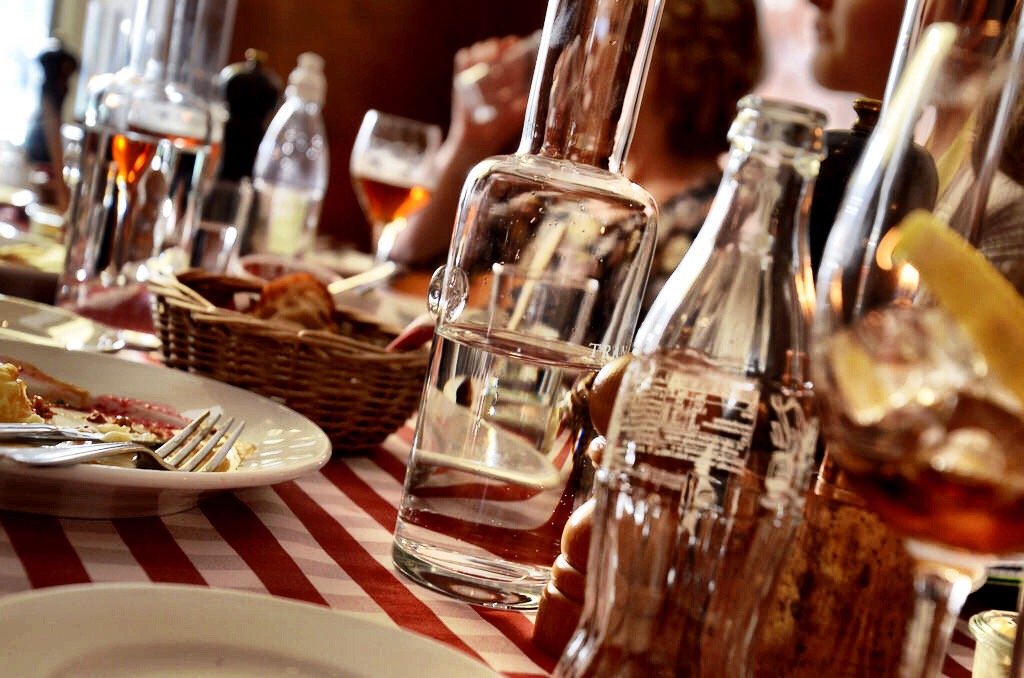Not only do I travel a lot, but I see and do a lot wherever I go. I’m a very active traveler and it seems that I always need something to do. I’m also a prolific writer and almost everything I see and do at some point will make its way onto this web site. Almost. Sometimes places and experiences fall through the cracks either because I frankly forget about them or just haven’t gotten around to writing about them yet. So today I thought I’d share a few fairly random tourist attractions around the world that I’ve enjoyed visiting in recent months, but haven’t written very much about yet for a variety of reasons. Some of these experiences will at some point get their own posts, but not all, which is why I thought it important to talk about them today.

Sibelius Monument – Helsinki, Finland
I had a free afternoon while in Helsinki and since I had seen most of the so-called major sights, I set my attention to a lesser-known attraction that had piqued my interest. The Sibelius Monument is dedicated to the Finnish composer Jean Sibelius, one of the country’s great artistic heroes. I’m not all that interested in his music nor do I know that much about him, instead I wanted to visit the monument thanks to its unique design. Once again I allowed images found on Instagram to guide my travels and while it was a strange spot to visit, I’m ultimately glad I went. Getting there was a challenge though. Google maps led me to believe that it was an easy walk from my downtown hotel, so I believed it. What followed was a multi-mile hike along freeways and through random neighborhoods where the only thing of note was probably a strange American walking around pointing his phone in different directions. It was sort of worth the hassle though, because while smaller than I had imagined, the monument was indeed beautiful. Designed and built in the 1960s, it reflects the era and the abstract design is befuddling with its 600 hollow steel pipes welded together in a wave-like pattern. But it’s beautiful and if you have nothing else to do, you should visit. But I’d drive and I certainly wouldn’t walk there in the dead of winter.

Houmas House Plantation – Louisiana
Old homes and plantations line the river between Baton Rouge and New Orleans, and they’re popular stops for just about any traveler to the region. Walking into the massive gardens surrounding the house I immediately saw why, it was stunning. I had never before visited a classic Southern Plantation, all of my preconceptions formed mostly by watching Gone With The Wind. Turns out that movie, and countless others, did the time period justice because Houmas House looks exactly what I think an old plantation house should look like. Starting life off as a modest trading post, at its height the Houmas House Plantation included more than 300,000 acres of land and was the top producer of sugar in North America. That’s a stunning fact and made the owners insanely wealthy, building this massive estate as a country getaway. The house has thankfully been preserved and the current owner even lives in the house, clearing out of his room before the first visitors of the day start their tours. Tours are offered throughout the day, lasting about an hour and led by well-informed and entertaining docents. It was a great opportunity for me to learn more about life in Louisiana in the 18th and 19th centuries and to peek into the lives of the Southern elite. Houmas House is also a very easy drive from Baton Rouge and makes a perfect half-day diversion.

Gibb’s Farm – Tanzania
Granted, this isn’t necessarily a place that you just chance upon, but if you find yourself in Tanzania it really is worth at least a stop, if not an overnight stay. One of the first guesthouses in Tanzania, Gibb’s Farm started out as a coffee farm in the 1920s. Walking around the impossibly lush grounds of the property it looked and felt like a tropical farm should look like. Gibb’s Farm is something out of a movie or a dream, but luckily it exists in real life and is pretty easy to visit. The farm enjoys an enviable position overlooking the Great Rift Valley and the Ngorongoro Forest and today there is a main farmhouse and 17 cottages where guests can spend the night in perfect, tech-free tranquility. I was just there for lunch, but even that was an event as meals are served using fruits and vegetables from the farm itself, along with its famous coffee which is still produced, processed and roasted on-site. I could’ve stayed there all day, just relaxing in the lounge chairs under ancient acacia trees, listening to the sounds of the forest and admiring those amazing views. This is an unexpected stop in Tanzania, a place where you won’t see elephants or leopards, but instead will only find a little bit of inner peace.

Stockholm City Hall – Sweden
I was a little confused at first as to why all of the so-called experts listed a tour of the City Hall on every must-do list I read. It looked nice enough from the outside, but I couldn’t imagine that it would be very interesting inside. Naturally, I was wrong. While it’s still a working government office building, this is also where the annual Nobel Prize dinner is held, a major event in the city. Designed in the early 20th century, the interiors are grand and opulent, none more so than the Gold Room. Made with more than 18 million gold mosaic tiles, the glitz and glam of the room seems totally incongruous with everything I know about Sweden, and yet somehow it all works. It was a beautiful way to end my short time in Stockholm and the view of Gamla Stan from the City Hall is worth a visit in its own right.

Kinderdijk – The Netherlands
An admittedly touristy place, it’s also a beautiful one and for non-Dutch people such as myself, is everything we think the Netherlands should look like. When we think of Holland most of us think of wooden shoes, cheese and windmills. Traditional windmills are increasingly hard to find in the Netherlands, which is why Kinderdijk is such a popular tourist attraction. A UNESCO World Heritage Site, the 19 windmills built here are the largest concentration of old windmills still existing in the Netherlands today and the best place to learn more about this popular Dutch symbol. Tours are led by local docents, volunteers who take on the duty out of love for these precious ties to the past. Walking around with our docent, it was interesting to learn of the importance of these windmills in the history of the Netherlands. They drained the swampy lands of the Low Country, making it possible not just to use the land, but to avoid seasonal flooding that defined the country for so long. Understanding and taking control of the water is what led to the incredible success of the Netherlands throughout the centuries, transforming it from a swampy country to one of incredible wealth and power. None of that would have happened without these still-beautiful windmills.

Roman Amphitheater in Pula, Croatia
I love Croatia and so when I had a chance to visit a region I hadn’t yet visited while on a Viking Ocean cruise, I was excited. Istria is mostly known for its fine wines and delicious foods, but it’s also an area with an ancient past, as the massive Roman amphitheater in Pula attests to. Pula isn’t that big, not really, and while it’s beautiful and there are a few things to see and do, the arena is really at the heart of the experience. And it deserves that attention; it’s the only remaining Roman amphitheater to have four side towers and with all three Roman architectural orders entirely preserved. Constructed nearly 2,000 years ago, it’s also one of the largest surviving Roman arenas in the world, making it not just fun to explore, but important as well. As an antiquities nerd, I loved walking up the hill to this ancient site, amazed that it still exists today, but thankful it does. When you’re in Pula, this should be at the top of your to-do list, along with strolling around town getting to know it a little better.

Glamis Castle – Scotland
It’s hard to travel anywhere in Scotland without stumbling upon a castle, and one of the most popular has to be the massive Glamis Castle. Often called Scotland’s most beautiful castle, Glamis has long been linked with royalty and most recently it was the childhood home of The Queen Mother. Although a castle has been on this site for many centuries, the massive structure I saw as I drove down the long lane leading up to it was mostly built in the 17th century. Regardless of when it was built, there’s certainly no denying its beauty. Literature buffs may remember it as the home of Macbeth, and while the historical figure never lived here, another king – King Malcolm – was indeed murdered here in 1034. There are a lot of stories associated with the castle though, many of which you’ll learn about when you take the official tour. Before heading off with the tour guide though, make sure to spend some time exploring the gardens and the perfectly maintained grounds, which are also home to the castle’s own herd of Highland cows. This ancient breed of cattle is the de facto symbol of both Scotland and the Highlands, and this will probably be your best chance to take some great photos of these fuzzy and docile animals.
The post 7 Random Tourist Attractions You Should Know About appeared first on LandLopers.
As part of my 40th birthday celebration in Northern Europe, I included a brief weekend stay in a city I had long wanted to visit, Stockholm. I knew that it wouldn’t be nearly enough time to really experience the city, but I wanted to at least visit to get a sense of it and to frankly see whether or not I even liked it. Almost right away though I knew that Stockholm was something special, and I found myself falling in love with this colorful city. We only had a weekend though and so we had to use our time efficiently in order to see and do as much as possible while still having fun. I thought I’d share a few of those weekend highlights so that if you find yourself in Stockholm for only a few days you too can experience the best that this gorgeous and lively city has to offer.

Stay in relaxed luxury
Hotels are important to me when I travel and I’m always looking for the latest and greatest when it comes to luxury travel. So when I learned about the top rated hotel in Stockholm and it was a name I didn’t recognize I was intrigued. But that’s kind of how the folks at the Ett Hem Hotel like it, flying under the radar in a relaxed but elegant way. In Swedish “ett hem” means at home, and that’s exactly what the experience of staying with this superb hotel is really like. Housed in a former mansion, Ett Hem features just 12 luxuriously appointed rooms in a curious mix of hotel and B&B that combines the best elements of both styles of accommodation. Thanks to the limited number of rooms, it’s hard not to feel special staying there as a guest. Where the staff almost outnumbers clientele, the experience feels special, as if it were hand crafted for you personally. Inside, the house is light and airy, well designed but also homey. In the winter the roaring fire is a perfect spot to curl up next to, book in hand and coffee by the side. Almost immediately I knew it was a place where I wanted to spend time, instead of a hotel that is only a place to relax in the evenings. In addition to the beautiful rooms, Ett Hem is also well known locally for its restaurant, where hotel guests have special privileges to enjoy the best the kitchen serves, no matter the time of day. The Ett Hem Hotel isn’t your normal luxury experience; it’s something much better. The property takes all of the great qualities of a larger hotel and highlights them in a smaller, more intimate package. I can think of no better place in Stockholm as the launching pad for a luxury weekend than this outstanding property.

Walk through Gamla Stan
As an American, I feel especially compelled to visit the old historic districts of European cities I visit. I just love the old buildings, colorful squares, cobblestone streets and special ambience that only a centuries old neighborhood can provide. In Stockholm, this important link to the past is found in the popular Gamla Stan neighborhood. Stockholm of course has an excellent public transportation system, I’d expect nothing less from a Scandinavian capital, and it’s easy to reach Gamla Stan by train. Gamble Stan is a popular tourist destination, but with good reason. This colorful neighborhood is one of the largest and best-preserved medieval city centers in Europe, and from personal experience there’s nothing better than ambling along its lanes and narrow alleyways, trying to discover what secrets this part of town may hold. This is also where Stockholm was founded in the 13th century, making it a historically important area as well as a fun one to explore. If you want to do more than just wander and window shop, Gamla Stan is also home to the Royal Palace, Stockholm Cathedral and the Nobel Museum.

Visit as many museums as you can
I like museums, but they’re not usually the reason why I visit a new city. That being said, the museums in Stockholm actually were a major reason for my visit and one in particular was number one on my to-do list. ABBA: The Museum may not sound like one of the great museums of the world, but believe it or not I soon discovered that it’s one of the best-curated and organized museums I’ve been to in a long time. Whether or not you’re a fan of the music, I find it hard to believe anyone won’t enjoy singing along to “Mamma Mia” in a private recording booth, or dancing with holograms of the musicians themselves on stage. It’s fun, quirky and a must-do activity in Stockholm. Luckily, the ABBA Museum is within walking distance to several other great Stockholm museums including the most popular, the Vasa Museum. The museum displays the only almost fully intact 17th century ship that has ever been salvaged, the 64-gun warship Vasa that sank on her maiden voyage in 1628 and walking around the ship learning more about the era is something enjoyable for just about any age or interest. I was in Stockholm for less than two days, a travesty now that I look back at it. If I’d had the time there are many other museums I would have loved to visit, including the Transportation Museum, the Photography Museum and many more. I like museums, but they’re not normally the focal point of my trips. Stockholm is different though, the museums in town are just so interesting and varied that an entire trip could be made centered just on them.

Eat all the food
Nowadays, finding new food tours is just a normal part of my travel experience. That’s why when I had such limited time in Stockholm, I knew that a great food tour necessarily had to be a part of the trip. As with most food tours, I learned a lot about what Swedes eat and why, but I also learned a lot about the city. The Stockholm tour with Food Tours Stockholm was one of the best run food tours I’ve been on, led by a local food writer and cookbook author, her expertise in all things Swedish cuisine made a big difference not just in my enjoyment of the food and city, but my understanding of the culture behind it. Of the several tours offered, I opted for the Nordic Experience walk so that I could learn more about the very traditional side to Swedish cuisine. I’d traveled in Sweden before, but my foodie knowledge of the country was very limited, a deficiency in my education that was quickly corrected. From meats and cheeses to traditional Swedish meatballs, we tried a little bit of everything that afternoon. Of course my favorite Swedish food custom is Fika, that time in the afternoon when you sit down with coffee, some cake or sweets and catch up with friends. It’s a tradition that I wish more countries would adopt and is yet another reason to fall in love not just with Stockholm, but Sweden itself.

Walk around the waterfront and visit City hall
Water is an important part of life in Stockholm, it’s everywhere and experiencing it is an essential aspect of traveling there. Take a ferry ride, go on a boat tour or just walk around a few of the many waterfront areas, no matter how you do it just make sure to admire the city’s maritime side. Also be sure to visit an unlikely spot, the Stockholm City Hall. I was a little confused at first as to why all of the so-called experts listed a tour of the City Hall on every must-do list I read. It looked nice enough from the outside, but I couldn’t imagine that it would be very interesting inside. Naturally, I was wrong. While it’s still a working government office building, this is also where the annual Nobel Prize dinner is held, a major event in the city. Designed in the early 20th century, the interiors are grand and opulent, none more so than the Gold Room. Made with more than 18 million gold mosaic tiles, the glitz and glam of the room seems totally incongruous with everything I know about Sweden, and yet somehow it all works. It was a beautiful way to end my short time in Stockholm and the view of Gamla Stan from the City Hall is worth a visit in its own right.
This is how I chose to spend my brief time in Stockholm, and looking back at it I think it was the perfect first introduction. More than anything though, it was just a taste of everything this amazing city has to offer and I can’t wait to return and learn more about the Swedish capital city.
The post Perfect Stockholm Weekend in Five Steps appeared first on LandLopers.
I find myself writing about food a lot lately, but with good reason. Food is so important when we travel – it’s the fastest and best way to learn about any new destination. They’re also a lot of fun; who doesn’t like trying new local delicacies or concoctions you’d never even imagined? It’s a great way to combine education with good old-fashioned fun travel, and it’s a style of cultural immersion I find myself seeking out more and more. With that in mind, I thought I’d share some of my favorite food tours and other culinary experiences in Europe. Granted, there are many more out there, but it’s a big continent and I’m doing my best to eat my way around it.

Paris Holiday Food Walk
France is perhaps best experienced through the stomach and as the capital of this food-obsessed nation, Paris has plenty of experiences for the foodie in all of us. Several years ago I joined a Context walking tour of my favorite city; an effort to learn more about the culinary traditions behind the foods that I enjoy. The Baguette to Bistro tour was a great introduction to the basics of French cuisine. Led by an amiable and knowledgeable food writer, we covered everything from the art of the perfect baguette to trying some of the seasonal pastries common during the Christmas season when we visited. Even if you’ve spent a lot of time in Paris as I have, it’s a great way to learn more about the cultural underpinnings to some of France’s best-loved foods.

Eating London
This is the tour that changed my mind about food tours. Not only is it still the best food tour I’ve ever been on, but it’s probably the best walking tour of any kind, anywhere in the world that I’ve ever enjoyed. The four-hour jaunt through London’s eclectic East End is a walk through the neighborhood’s history and culture as well as an opportunity to taste some great bites. The guides are passionate about their city and the food culture and I learned a lot as I chowed down on classics like bacon sarnies and fish & chips as well as more recent neighborhood additions like spicy curries. All food is included in the tour cost and come hungry because the bites are much more than samples, they’re mini-meals in their own right.
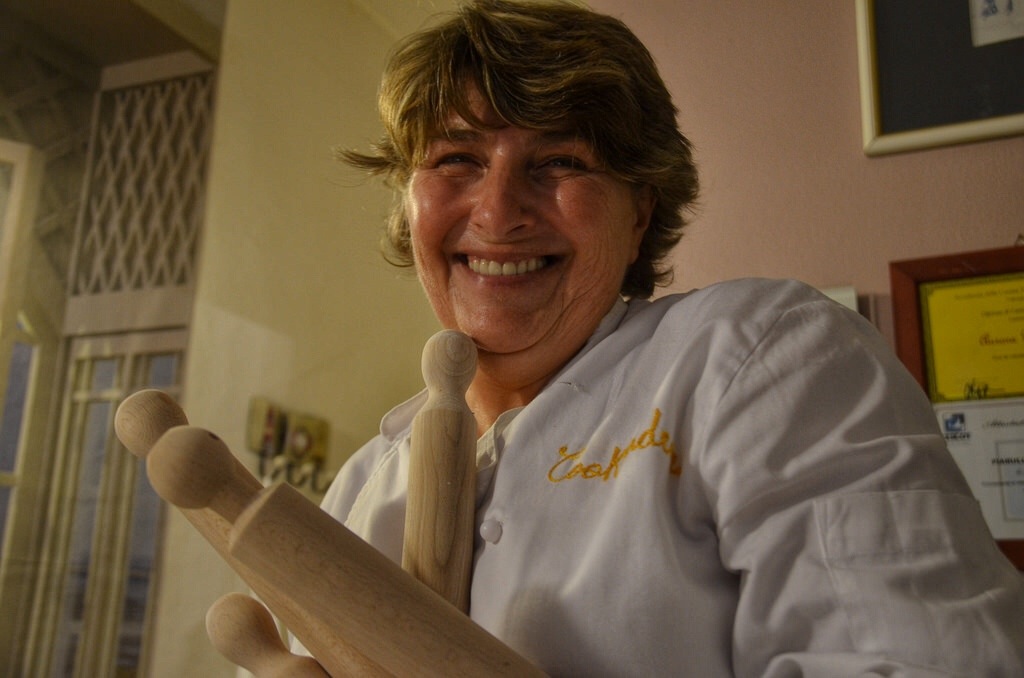
Cooking in Milan
Food tours are great, but so are cooking classes that go into more depth than any tour could hope to. I look for these when I have enough time in any given place to spend, especially since they usually last for several hours. I also try to do them in especially iconic foodie destinations, and Milan certainly qualifies as that. Northern Italy in general, but Milan and Lombardy in particular is home to some of the most famous Italian dishes, as well as the tastiest. Walking into the modest home of Chef Aurora, owner of Cook and Dine, I could already smell the aromas of cooking prep well underway. There’s something inherently calming about being in someone’s house, in their kitchen when learning how to cook. Had we been in a large industrial space I know I would’ve been a little nervous, but cooking alongside Aurora in her personal kitchen made it seem like I was hanging out with a friend instead of a teacher. Through her patient tutorial, that evening we learned how to prepare several iconic Milanesi dishes including: Osso bucco, pumpkin ravioli, cotoletta and tiramisu. It was a delicious way not just to learn about the food, but to really feel connected to the people who call both Milan and Lombardy home.
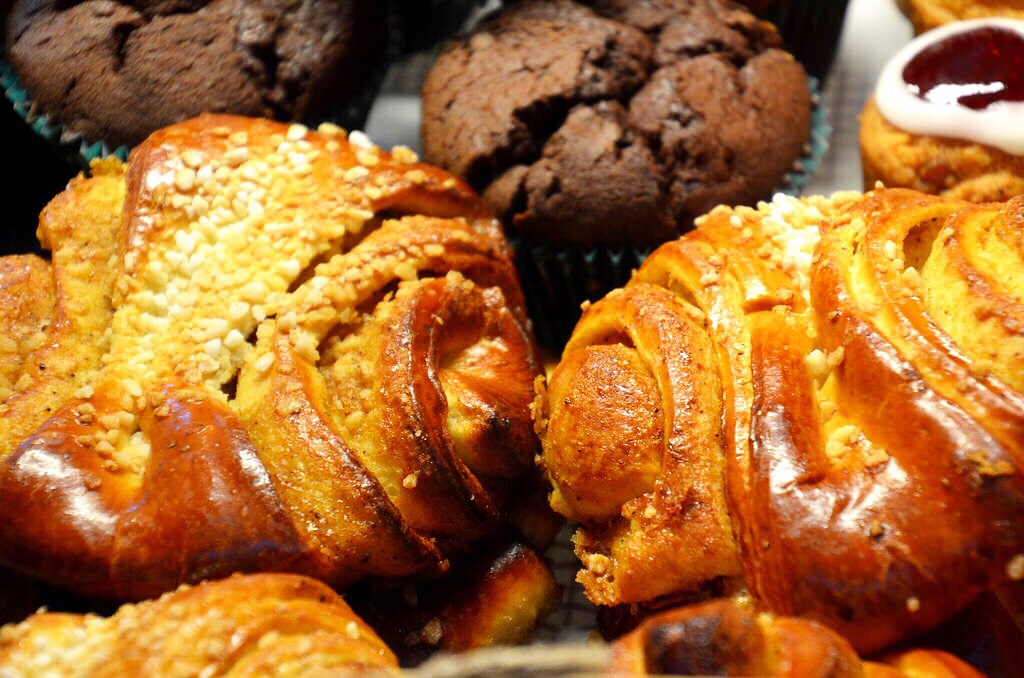
Helsinki Food Tour
Before first visiting Finland I had no background with Finnish food, and so in this case I felt that a food tour wasn’t just a nice thing to do, it was an important experience. Using the local tour company Happy Guide Helsinki, I met my guide outside one of the city’s many food halls, eager to start my culinary education of the city. Meats, cheeses, breads and more, each stop at the various stands told a different story, shared a different tradition and naturally, all tasted amazing. Featuring foods produced locally, my guide gave me her unique point of view as an expat living in Helsinki, a perspective that added a different and important perspective to food in Helsinki and Finland. Throughout the course of the afternoon we ambled around town, trying local favorites like pastries and cinnamon rolls as well as learning more about Finland’s great love of candy, including the often maligned (and rightly so) salmiakki. It was a fun afternoon and an eye-opening experience as I finally began to understand the foodie side to Finland.

Afternoon at a Spanish Fishing Hut
Not all food experiences are overly formal; something I discovered when I was invited to a local fishing hut in Spain for what is a very popular activity. It’s hard to find a bad meal anywhere in Spain, but that’s especially true along the sunny Costa Brava. Here food is life, the logical way to welcome friends and strangers alike. Seafood is necessarily a big part of daily life here along the Mediterranean, and enjoying an afternoon on the coast isn’t just something tourists like to do, it’s popular for locals as well. Many families or groups of friends co-own small fishing huts. Small buildings next to the beach with a place to nap, a kitchen and that’s about it. Throughout the warm summer months especially, everyone gathers at the huts to enjoy the weather, great friendships and of course some amazing food. It’s a remarkable experience anytime someone invites you into their homes, into their lives, and the afternoon I spent with my new Spanish friends wasn’t only the most fun I had along the Costa Brava, it taught me more about the culture and the food than anything more formal could have ever achieved.

Amsterdam Food Tour
Since my first experience with the tour company Eating Europe was such a success in London, when I found myself in another city where they host tours I knew immediately that I had to join. I wasn’t disappointed either and that morning and early afternoon I spent wandering around the canals of Amsterdam made me finally learn to appreciate the city, food coming to the rescue once again. From classic Dutch apple pie and poffertjes to more recent additions to the Dutch food scene from far-flung colonies, the tour was a true immersion into what Amsterdam as a city values in its food. Of everything I tried that morning, without a doubt my favorite bite came not at a café or restaurant, but at a butcher’s. Butcher Louman in the Jordaan neighborhood has been the go-to source for great meats since 1890, but they’re especially well known for their sausages and cured meats. My favorites were the ossenworst (raw, smoked beef sausage) and the grillworst (grilled sausages), which are both amongst the best in the city.

Making Black Forest Cake in Germany
I have an incredible sweet tooth – I’d much rather enjoy a great dessert than a main course any day. So when I travel I am naturally drawn to pastries, chocolates and other sweet treats and one country where that proclivity is always rewarded is Germany. Of the many sweet food experiences I’ve enjoyed in Germany, learning how to make a real Black Forest Cake with a local baker in Freiburg is probably my favorite moment. Special tart cherry kirsch from the Black Forest is the only acceptable ingredient to add to the layers of chocolate, whipped cream and cherries that make an authentic cake and it’s not just a stereotype, the cakes are still popular locally. The baker told me that families wouldn’t think of having an Easter dinner without one, although it’s certainly popular throughout the year. Freiburg is the gateway to the Black Forest, so locals take this special dessert very seriously, and learning from the top bakery in town is something I’ll never forget.

Nordic Food Experience in Stockholm
Nowadays, finding new food tours is just a normal part of my travel experience. That’s why when I recently found myself in Stockholm for just a scant 36 hours, I knew that a great food tour necessarily had to be a part of the trip. As with most food tours, I learned a lot about what Swedes eat and why, but I also learned a lot about the city. The Stockholm tour with Food Tours Stockholm was one of the best run food tours I’ve been on, led by a local food writer and cookbook author, her expertise in all things Swedish cuisine made a big difference not just in my enjoyment of the food and city, but my understanding of the culture behind it. Of the several tours offered, I opted for the Nordic Experience walk so that I could learn more about the very traditional side to Swedish cuisine. I’d traveled in Sweden before, but my foodie knowledge of the country was very limited, a deficiency in my education that was quickly corrected. From meats and cheeses to traditional Swedish meatballs, we tried a little bit of everything that afternoon. Of course my favorite Swedish food custom is Fika, that time in the afternoon when you sit down with coffee, some cake or sweets and catch up with friends. It’s a tradition that I wish more countries would adopt and is yet another reason to fall in love not just with Stockholm, but Sweden itself.
These are just a few of my favorite European food tours and experiences – what are yours?
The post My Favorite European Food Tours and Culinary Experiences appeared first on LandLopers.

I’ve been absolutely infatuated with food tours lately. Not only do they offer a fantastic culinary peek into a new city and culture, but you usually get to see a lot of the city along the way and learn more about the general history and culture. The fastest and best way to learn about a new destination and her people is through the food they eat and the culinary traditions they value. That’s why I decided to use a few hours of my very limited time in Stockholm not at a museum or touring historic sites, but instead joining a Swedish food tour led by the group Food Tours Stockholm.
Thoughts About The Tour
I had been to Sweden before, but the West Coast and not Stockholm. Because of that, I was eager to learn more about the city’s own unique food customs and I couldn’t have picked a better person to lead me than the Food Tours Stockholm guide Cathrine. Growing up in a family of restaurateurs, it surprised no one when Cathrine also chose to follow a life of culinary pursuits and after writing prolifically about Swedish food for years, from magazines to cookbooks, she has recently added tour guide to her impressive résumé. That kind of knowledge and deep love of the subject is crucial to any great walking tour, but especially food tours. More than just guiding people from one place to the next, a great food tour should open a window into the culture in a way impossible to replicate in any other way. I’ve been on several food tours around the world, and from experience I know that they’re definitely not all made the same. But when it comes to the level of expertise and the preparation, I can say without hesitation that my Food Tours Stockholm experience was one of the best I have ever enjoyed.
Meeting in front of a modern food hall, Cathrine passed out bottles of water to all of the tour participants as well as a mini-guide to the food we would be enjoying over the course of the four-hour walk. That was a first for me, and that incredible level of detail set the perfect tone for the rest of the experience. But ultimately any great food tour is about the food itself and the stories these morsels have to share, and when it came to sampling these delicacies I found myself surprised again and again.
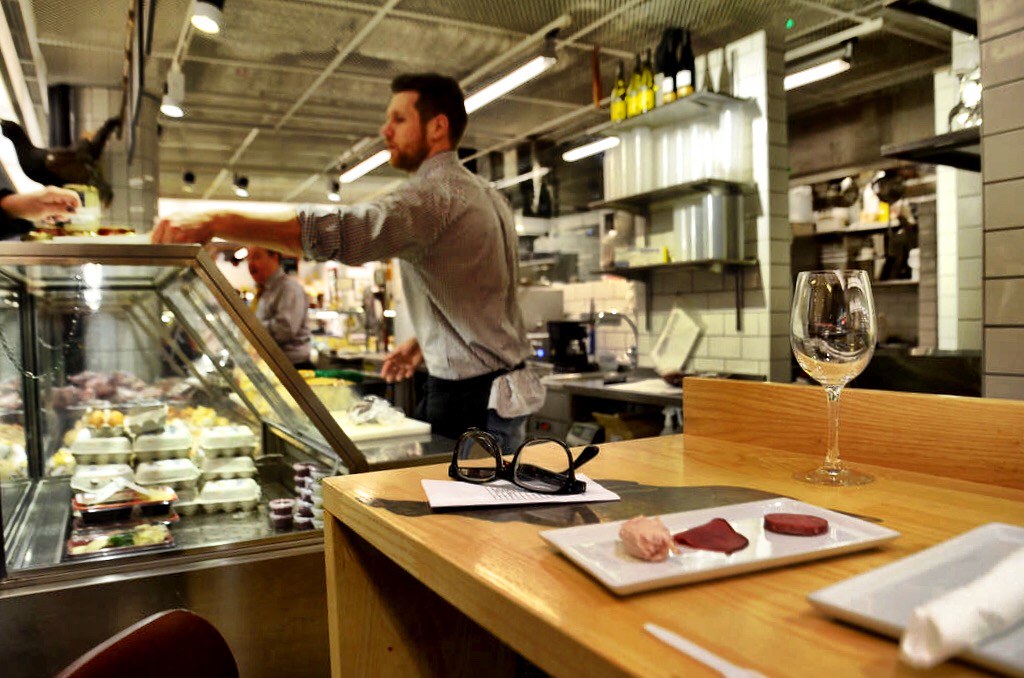
A Sampling Of The Delicious Bites Along The Way
I should preface this by saying that fish and seafood is a big aspect of Nordic and Swedish cuisine. I, however, don’t eat any fish or seafood, so I was a little hesitant about booking the tour at all. After a couple of emails though, I was assured that my preferences were not a problem and over the course of the tour I was impressed that every seafood-centric stop had created something special just for me. Just another detail that makes this tour stand apart from the others I’ve experienced.
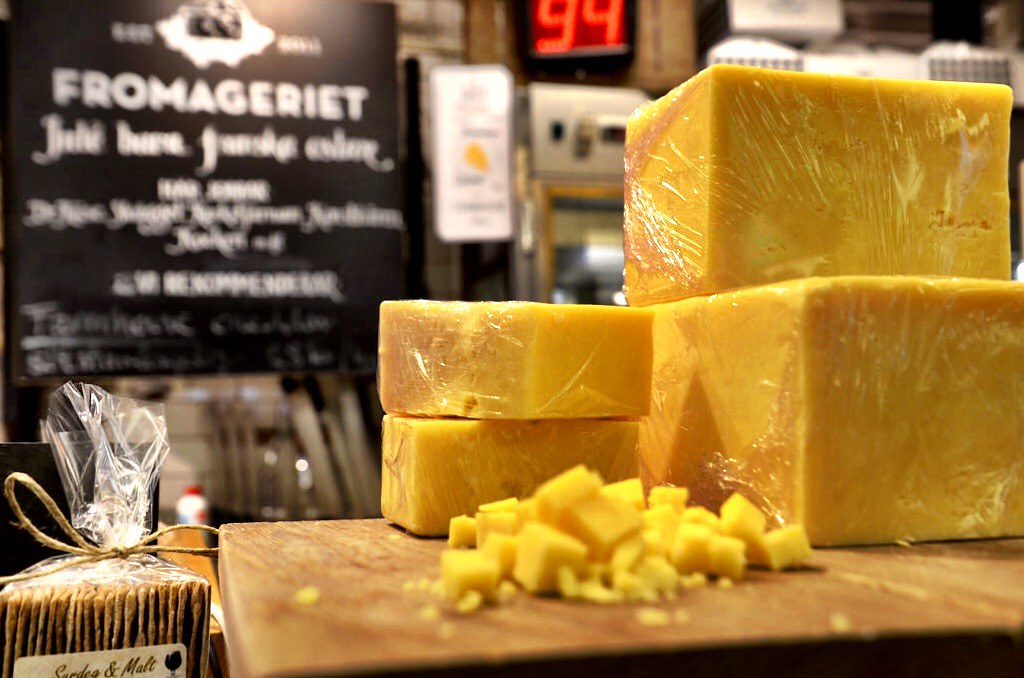
Meat and cheese
Like most great food tours, this one started off in a local food hall, one of many in town. The Hötorgshallen dates back to the 1880s, although it’s gone through a massive refurbishment in recent years and is now one of the cleanest and most approachable food halls I’ve ever been to. Inside are a variety of food stalls, restaurants and small cafes, but it was the butcher and cheesemonger where we received our first lesson in Swedish cuisine. Drawing upon its history and vast natural resources, it just makes sense that a variety of game meats are popular in the Swedish diet. Trying something a little unusual, cured bear meat, along with the more normal elk sausage and reindeer, it reminded me a bit of Finnish food; no surprise given their geography and shared history.
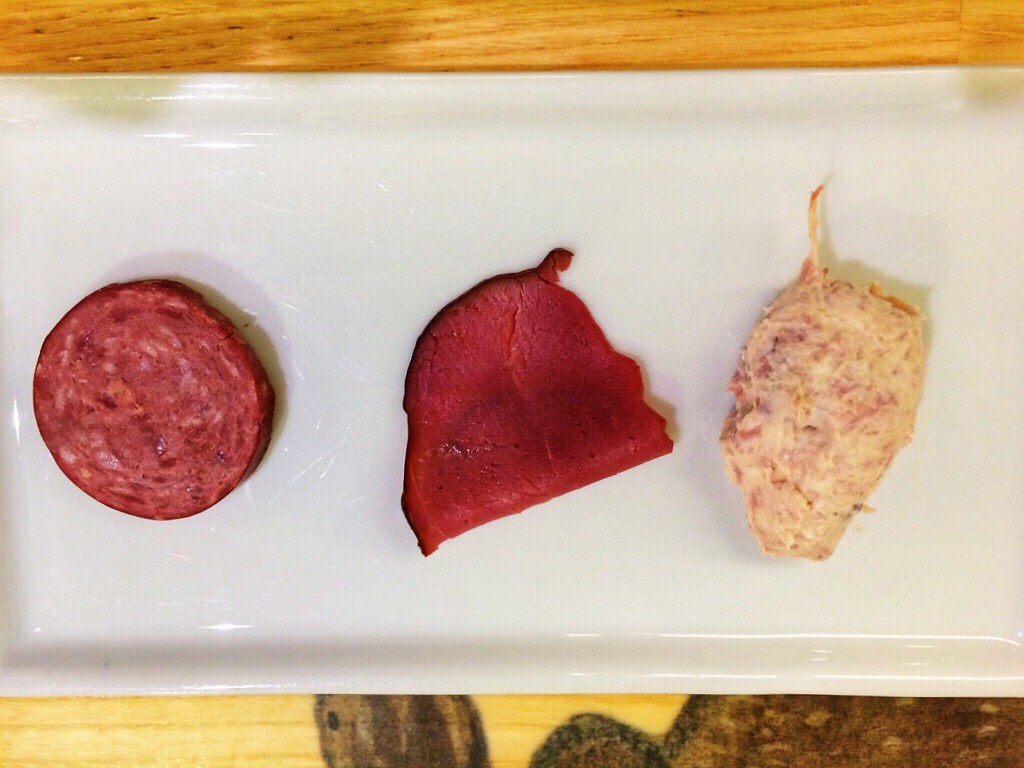
I was happy though to see an equally rich cheese tradition, a favorite aspect of any food scene for me personally. Locally produced, Cathrine said that it’s common to serve cheese courses in Sweden, especially after a nice meal with friends. It’s an art that we’ve mostly lost here in the US, opting instead for overly sweet desserts. Cathrine went on to say though that like so many other countries in Europe, it’s not abnormal to select a nice cheese and wine and enjoy them casually with friends on a Friday afternoon, a tasty way to usher in the weekend if there ever was one.
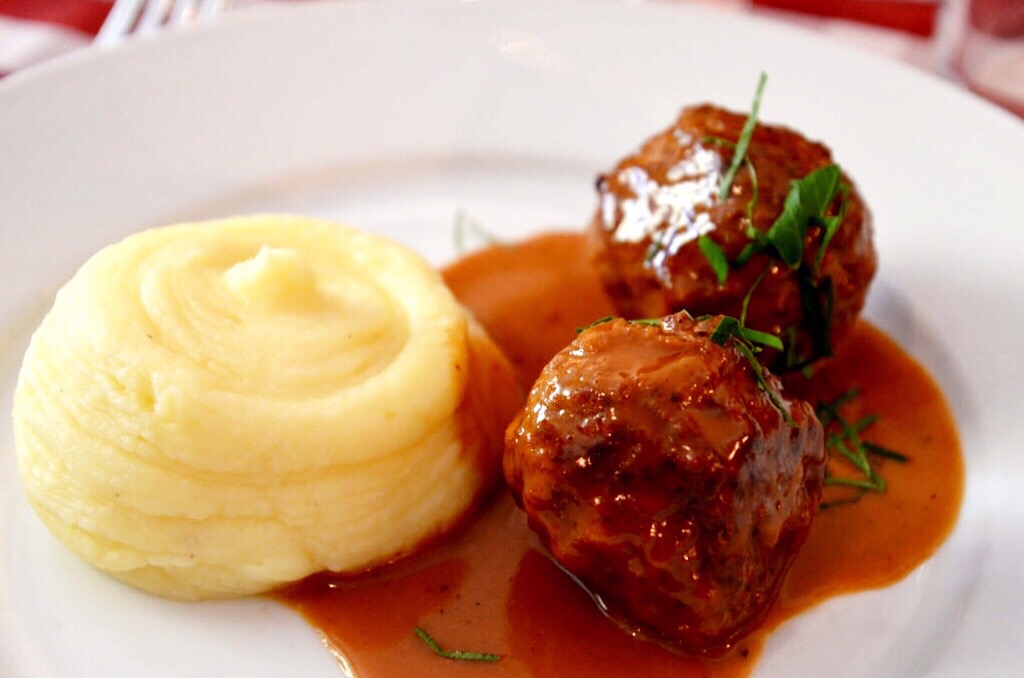
Traditional restaurants and those famous meatballs
Like any grand city, in addition to newer and trendier cafes and restaurants, there are also those tried and true establishments that may not change much over the decades, but that’s part of their appeal. Along the tour we visited several of these time-honored eateries, including my favorite: Restaurant Tranan. Founded in 1929, Tranan has always been known as a place to grab a drink, enjoy a few delicious bites and to enjoy some live music. Music in the restaurant’s cellar is a proud tradition and artists from Tom Waits to A Tribe Called Quest have all performed there. But most people come for the homey, classic dishes like the one I tried, meatballs with mashed potatoes and lingonberries. Made from a mix of meats with onions, breadcrumbs and a light cream sauce, if Sweden has a national dish this is it. The lingonberries are a common accompaniment to meat dishes; originally a way to had some freshness to what are traditionally heavy meals. I’ve tried Swedish meatballs many times in my life, but the version at Tranan was by far the best I’ve ever enjoyed.

Yes, some fish and seafood
Although I didn’t partake, and the restaurants were good enough to prepare alternate dishes for me, there’s no denying the importance of fish and seafood in the Swedish diet. Salmon, herring and shrimp all served in a variety of ways from fresh to pickled and fried can be found throughout the Swedish capital city. One of the best places to not only buy fresh fish and seafood but to also learn more about the fishy culture in Sweden is at Urban Deli in the trendy SoFo neighborhood. At this store/bar/café/restaurant you can pick up some great ingredients for your next meal, enjoy a drink with friends or eat in style at what has been called one of the best brunches in town. At the seafood counter though, the expert fishmongers shared with me what makes truly great fish and seafood and the importance of the tradition in Swedish cuisine. One dish in particular stood out to me, and all the Swedes on the tour immediately started nodding their heads when it was mentioned – Toast Skagen.
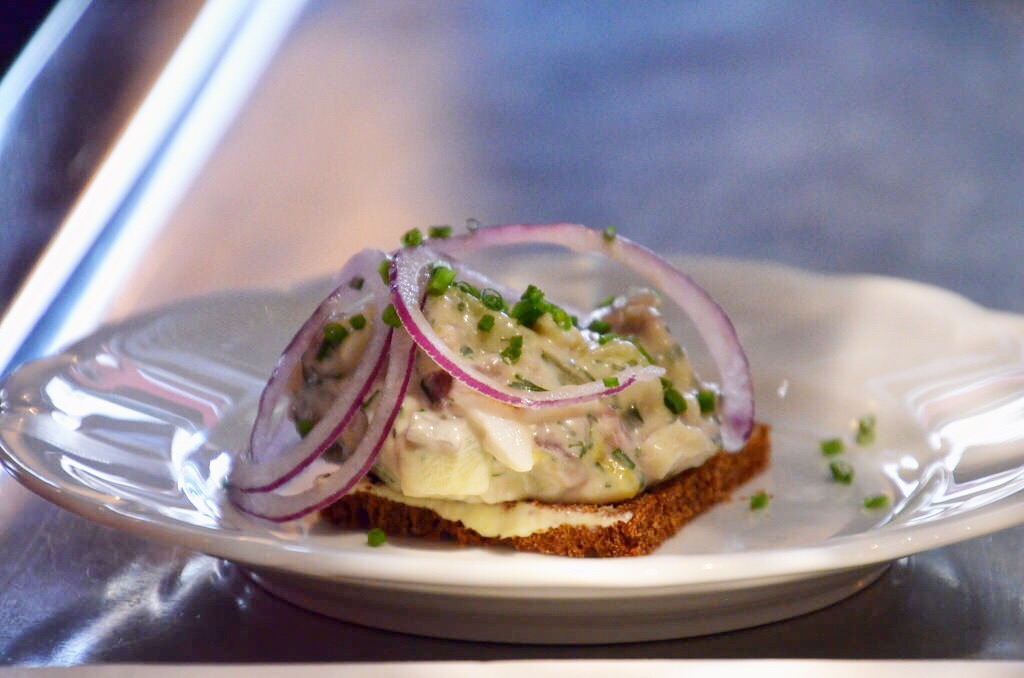
One of the staples of Swedish cuisine, Toast Skagen is simply made using a mix of shrimp or prawns with mayonnaise, a type of sour cream and some seasoning. Other ingredients like Tabasco or horseradish can be added and the final concoction is served on a piece of nicely toasted bread. While it’s not my idea of a great snack, everyone around me seemed to enjoy theirs with foodie glee.
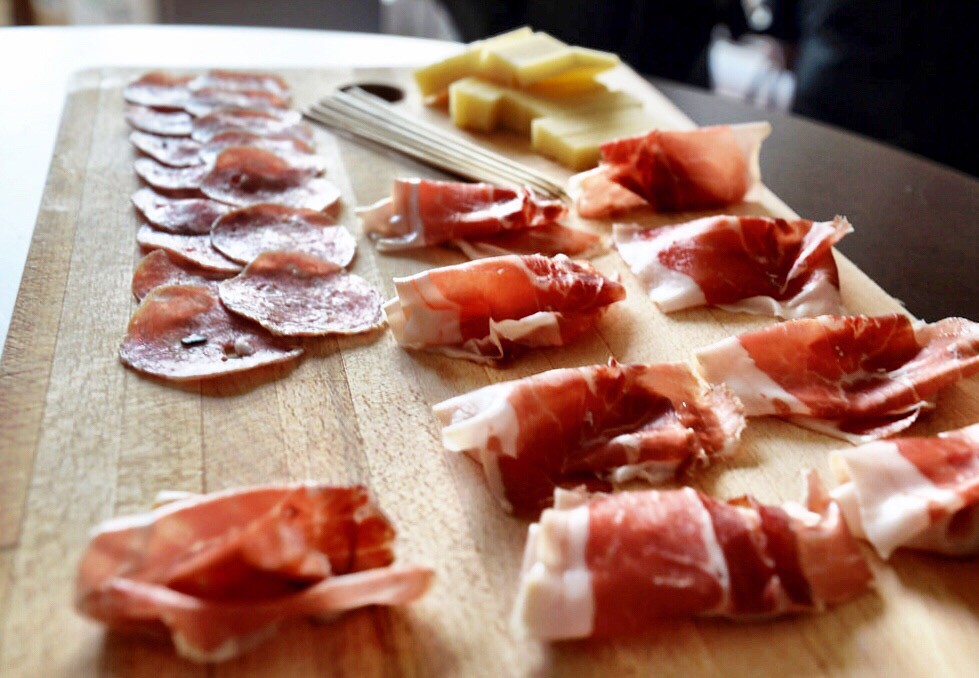
Global influence
Just like any major metropolitan area though, Stockholm is necessarily influenced by global cuisine, both from neighboring countries and from farther afield. Neighboring Finland has brought its own unique culinary habits, and a stand in the Hötorgshallen serves not only expat Finns but curious (and hungry) Swedes as well. Finska Butiken serves a wide range of Finnish delicacies and goods, from pastries and breads to sausages and even candies. The star of the stand though is the Karelian pasty. These simple snacks are made from a rye crust with a filling of rice. Butter mixed with boiled egg is spread over them and the result is an odd, but tasty bite. They’re especially popular around Christmas and the simple stand at the food hall sells thousands every day during the holiday season.
Another international purveyor of fine foods is one of Sweden’s oldest delicatessens, Österqvist. For generations, the experts here have been importing meats and cheeses from around Europe, bringing some of the best foods from France, Italy and Spain to central Stockholm. Never one to turn down a great Parma ham, I could easily see myself stopping by Österqvist to pick up the ingredients for an amazing picnic in the park just opposite the store.

Robust sweet tooth
If you’re a regular reader of the site, then you know that I have a robust sweet tooth. Dessert is my favorite course of any meal, but I’m also easily won over by pastries, donuts and anything else that will satisfy my fierce sweet tooth. I knew that Swedes feel the same way, which is why I was especially excited for the non-savory portion of the tour, and all of my expectations were met and then exceeded.
The first sweet stop was at a bakery known more for their breads, but they also introduced me to a new delicious discovery – the semla. This small bun is flavored with cardamom and filled with almond paste and whipped cream and is one of the most popular, and traditional, pastries in Sweden. They started as a tradition the day before the start of Lent, but have quickly turned into a year-round delicacy.
The other sweet tradition I love is something I discovered on my first trip to Sweden, fika. At its core, fika is a coffee break of sorts. It’s all about taking time in the afternoon to join friends over a cup of coffee and some sweet treats. Usually starting out with a bun or cinnamon roll, fika can quickly evolve to include cakes, chocolates and other sweet bites. It’s a wonderfully relaxing event, a tradition I wish more countries – including my own – would adopt.

Swedish Food Surprised Me
Like most people, I had some preconceptions about Swedish food before the Food Tours Stockholm Nordic Experience walk around the city. Some of those preconceptions proved true – meatballs and cinnamon rolls – but I was also surprised in many ways. I was surprised by how deeply rooted traditions, especially following a culinary calendar, are still part of daily life. At the very traditional restaurant Tennstopet, every month they feature a different Swedish delicacy perfectly matched to the season. Some of it seems as if it was created on a dare, but others are more important, homey and delicious.
I was also surprised by the rich diversity of food found all around Stockholm, even when focusing just on the Nordic dining experience. Sweden has long been an important power in the region, and it’s thanks to this military history that influences from Norway, Finland, Germany and throughout Europe have been intertwined into what is now called traditional Swedish food. It’s a wonderfully multicultural aspect to the cuisine that I didn’t expect, but certainly enjoyed.
When you visit Stockholm, there’s no shortage of great meals and bites to try that would fill multiple trips, but to really learn about the food culture of Stockholm and Sweden there’s no better place to start than on a culinary exploration of the city with Food Tours Stockholm.
The post Surprised By Swedish Food On A Stockholm Food Tour appeared first on LandLopers.

Recently I found myself in Stockholm for the very first time – a city I have long wanted to visit. Stockholm truly is one of the great capital cities of the world and has been for a very long time; for centuries it has been known as a bastion of business, culture and learning. So naturally the very first thing I did was to visit the ABBA Museum. It may seem like an unlikely first stop in a city of such legendary import, but not only was the experience fantastic, but I found myself drawing real inspiration from the museum itself. Seriously though, hear me out.

The ABBA Museum Experience
I’ve wanted to visit the ABBA Museum in Stockholm since it first opened just a couple of years ago. To be honest, I didn’t have high expectations; I just wanted to go in order to be able to say that I was there. But almost immediately I realized that this was no thrown-together, flippant experience. No, instead what I discovered almost right away was one of the best curated and presented museums I’ve ever been to. I know, who knew right?
I personally love ABBA and have probably since I first watched “Priscilla: Queen of the Desert,” a great film that used “Mamma Mia” on its epic soundtrack. Since then my love has only grown as I discover (or rediscover) songs that I can sing along to. I’m not alone obviously, millions of people around the world love ABBA as much or more than I do, although it’s hard to say why. The music isn’t deep, it almost never addresses pressing world concerns, no, it’s just fun. We all need things that are just fun in life, and both ABBA’s music and the museum provide just that.
Led by ABBA co-founders Ulf Westman and Ewa Wigenheim-Westman, the present day museum first opened its doors in 2013, and almost immediately became one of the most popular tourist spots in town. During my museum briefing by staff though, I quickly understood that this isn’t just a boring collection of trinkets and tidbits. Naturally, all of the members’ costumes and memorabilia on are full display, along with the story of how they started and persisted throughout the years. But the experience, because it really is an experience, is about much more than just looking at stuff. Visitors become part of the experience through a variety of innovative, interactive exhibits.
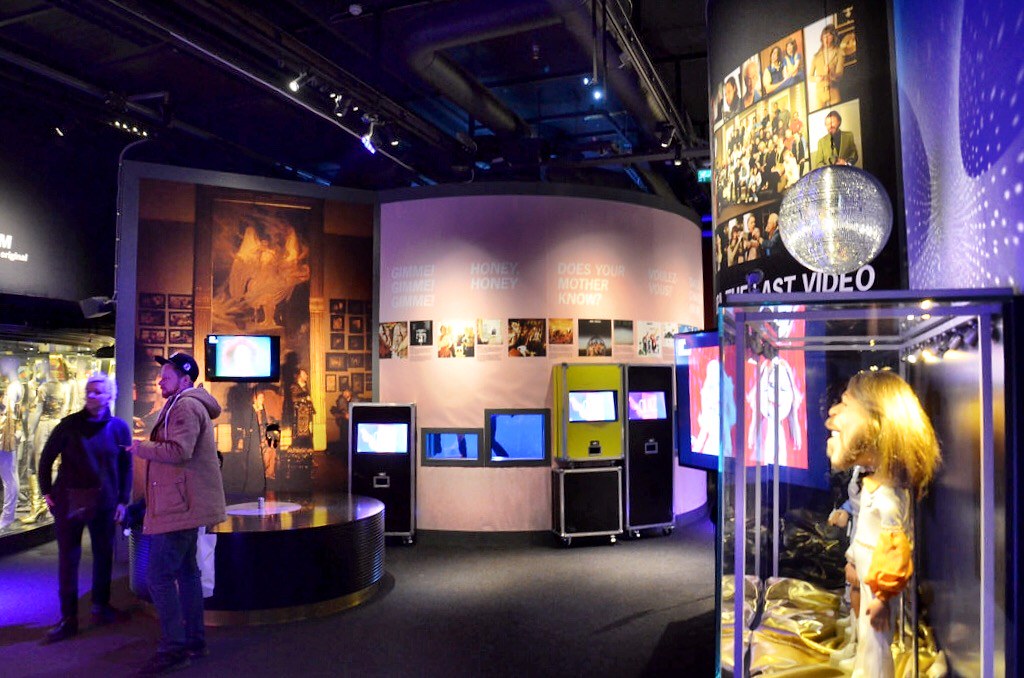
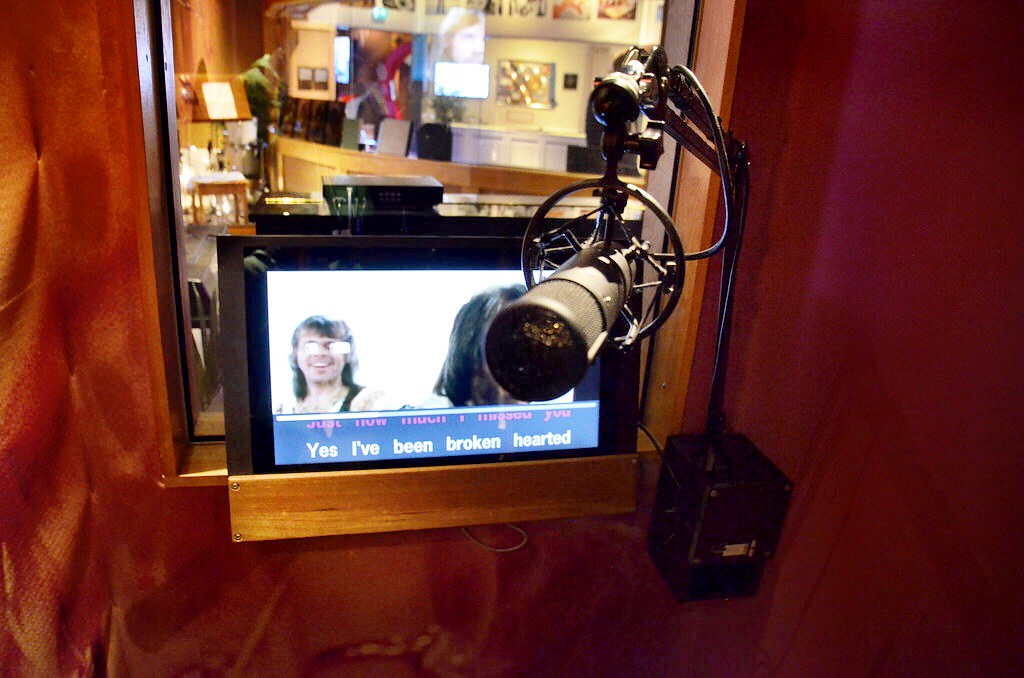
Complimentary headsets are included in the price of admission and all you have to do is wave them in front of marked exhibits to learn more about them, usually from the ABBA members themselves. The real fun comes though when guests visit the Polar Studio installation. ABBA created the former Stockholm studio and it’s where some of their most popular albums were recorded. Adjacent to the studio in the museum are special booths, karaoke-style spaces where visitors can try their hand at singing along with ABBA. Throughout the museum, the entrance ticket becomes a log of the extra-activities you decide to do. After I sang along (badly) with “Mamma Mia,” I received a score and was told that the full recording was available online through a special code on my ticket. Obviously, for the well being of humanity I’ve since destroyed the ticket, but I love that kind of curation and interaction. I don’t think I’ve visited any other museum in the world that encourages such involvement and participation with guests and you know what? It’s a lot of fun. I went on to try my hand at costume design (also poorly) and even mixing one of ABBA’s classics songs on a special mixing board. The ultimate in hands-on participation though comes in the hologram room, where anyone can jump onstage with ABBA and see if they have what it takes to become a new member. Leave your inhibitions at home, because this is meant to be a fun, almost party-like atmosphere.
Naturally, visitors leave the museum through a disco dance room, where the disco ball and strobe lights never end and every day is the time of your life.

What I Took Away From It All
Aside from the interactive exhibits and the good, clean fun, the museum itself was interesting. I found myself learning not only about the band, but also more about the music industry and even cultural issues in Sweden during the 1970s and 80s. It broadened my knowledge about the country and the pop band that it was forced to love, even though at times it may not have wanted to.
I also left the ABBA Museum feeling inspired, which surprised me. ABBA never intended to become one of the most famous bands on the planet whose music has mostly stood the test of time. They were some friends who made music that wasn’t very popular; they were just enjoying themselves. The result was super-stardom and the pinnacle of music success. There’s a good lesson in that I think. What our passions are in life, the things that we enjoy and want to do most are important. So many of us ignore them, or relegate them to hobbies or things to do when we have the time. But if we devote ourselves, and I mean wholly and truly, then I firmly believe success will be a natural result. Being happy and fulfilled in life is about doing things that not only have an impact on the world, but on also on us. It’s important not to ignore our passions, but to embrace them, just like ABBA did so many years ago.
The post Feeling Oddly Inspired By The ABBA Museum In Stockholm appeared first on LandLopers.

A few weeks ago I finally visited Stockholm for the first time. I say finally, because a visit to the so-called capital of Scandinavia had been on my wish list for as long as I can remember, and I’ve even visited Sweden before but somehow just never made it to Stockholm itself. On the way home from Helsinki though, I decided to add in a couple of days to the trip and spend some time, far too little of it honestly, getting to know Stockholm for the first time. I really didn’t know what to expect. Nordic cities in my opinion are hit or miss. Some are great while others have the appeal of watching paint dry. Given the build up, all the photos I’d seen and stories I had read though I was certain Stockholm would be interesting, I just didn’t realize how hard I would fall in love with it. Looking back at the experience, I wanted to try to figure out why I fell for the city after only a day, it’s not a normal thing for me, and so with that in mind here is my attempt at dissecting the appeal of Stockholm.

Museums and More
I like museums, but they’re not usually the reason why I visit a new city. That being said, the museums in Stockholm actually were a major reason for my visit and one in particular was number one on my to-do list. ABBA: The Museum may not sound like one of the great museums of the world, but believe it or not I soon discovered that it’s one of the best curated and organized museums I’ve been to in a long time. Whether or not you’re a fan of the music, I find it hard to believe anyone won’t enjoy singing along to “Mamma Mia” in a private recording booth, or dancing with holograms of the musicians themselves on stage. It’s fun, quirky and a must-do activity in Stockholm. Luckily, the ABBA Museum is within walking distance to several other great Stockholm museums including the most popular, the Vasa Museum. The museum displays the only almost fully intact 17th century ship that has ever been salvaged, the 64-gun warship Vasa that sank on her maiden voyage in 1628 and walking around the ship learning more about the era is something enjoyable for just about any age or interest. I was in Stockholm for less than two days, a travesty now that I look back at it. If I’d had the time there are many other museums I would have loved to visit, including the Transportation Museum, the Photography Museum and many more. I like museums, but they’re not normally the focal point of my trips. Stockholm is different though, the museums in town are just so interesting and varied that an entire trip could be made centered just on them.
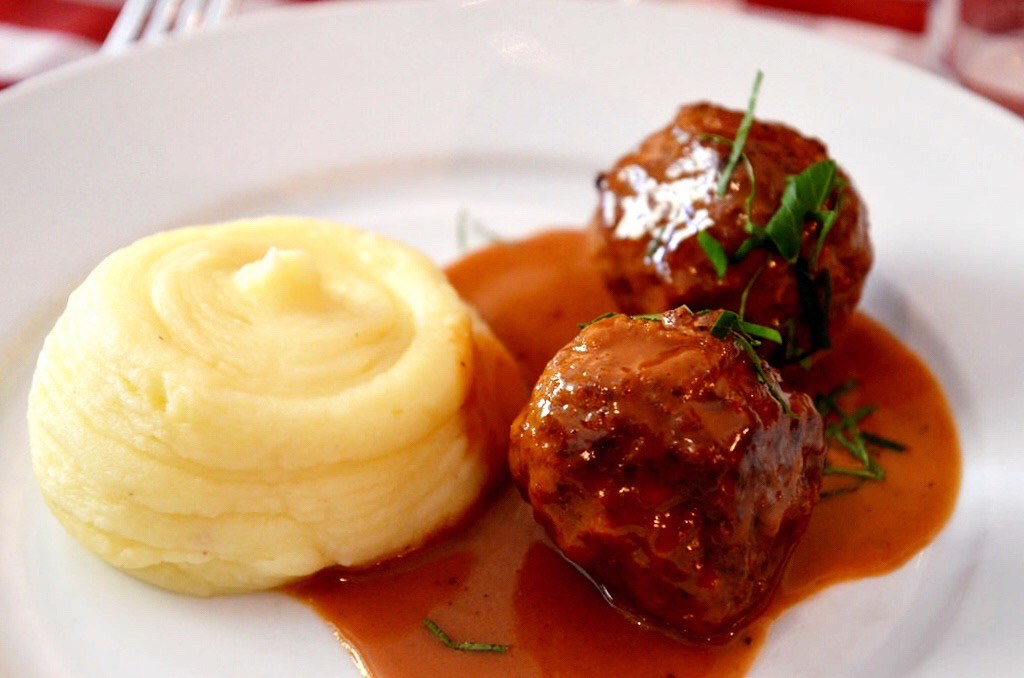
Great Food
The fastest way to learn about a new city or culture is through the food, which is why I decided to devote a considerable hunk of my time in Stockholm to joining a food tour with the walking tour company Food Tours Stockholm. Choosing their Nordic Food walk, it was a fantastic, 4-hour introduction to the city, the people, the culture and of course the food. As with most food tours, I learned a lot about what Swedes eat and why, but I also learned a lot about the city. Food tours are the best way to learn about the totality of a new city or country you visit and the food is a nice added bonus. The Stockholm tour was one of the best run food tours I’ve been on though, led by a local food writer and cookbook author, her expertise in all things Swedish cuisine made a big difference not just in my enjoyment of the food and city, but my understanding of the culture behind it. Of course my favorite Swedish food custom is Fika, that time in the afternoon when you sit down with coffee, some cake or sweets and catch up with friends. It’s a tradition that I wish more countries would adopt and is yet another reason to fall in love not just with Stockholm, but Sweden itself.

Color, Architecture and Travel Umami
The first thing that struck me about Stockholm was the color. Everywhere, from the Old City to more modern elements, color seemed to be emblazoned on every surface. This is the vibrancy I missed in other Nordic cities like Oslo and Helsinki, and it put a smile on my face that seemed to last throughout the duration of my visit. While touristy, Gamla Stan – the Old Town – is one of those places that just needs to be experienced. Historical buildings, restaurants, shops and cafes all line the winding streets, but the best views of the Old Town are from across the water at the Stockholm City Hall. I was a little confused at first as to why all of the so-called experts listed a tour of the City Hall on every must-do list I read. It looked nice enough from the outside, but I couldn’t imagine that it would be very interesting inside. Naturally, I was wrong. While it’s still a working government office building, this is also where the annual Nobel Prize dinner is held, a major event in the city. Designed in the early 20th century, the interiors are grand and opulent, none more so than the Gold Room. Made with more than 18 million gold mosaic tiles, the glitz and glam of the room seems totally incongruous with everything I know about Sweden, and yet somehow it all works. It was a beautiful way to end my short time in Stockholm and the view of Gamla Stan from the City Hall is worth a visit in its own right.
More than museums, cinnamon rolls or nice rooms though, there’s just something intangible about Stockholm that drew me in immediately and which is begging me to return. I don’t know what it is, but it’s a feeling, a sensation really, I’ve felt before; something I call travel umami. It’s when all of the pieces of a trip or new destination come together perfectly and in the process create something intangible, a new element that can’t be seen, touched or heard but which makes everything extraordinary. I call it travel umami. You can’t define it, but you know it when you feel it.
I spent less than two days in Stockholm and saw a mere fraction of everything that I wanted to. But thanks to that travel umami, the city is a siren calling out to me now and I know I’ll return, not just to visit more museums, but to try to understand a little better what makes it so very special.
The post My Instant Love Affair With Stockholm appeared first on LandLopers.

Food isn’t only the most important part of the travel experience, it’s one of the most fun. Through food we learn a lot about new cultures and the people who enjoy these morsels. If we’re open to the experience, we discover fascinating little societal quirks that we’d probably never pick up on otherwise. Food also helps us form our strongest travel memories. It always amazes me that a single, simple aroma can instantly transport me back to the souks of Marrakech or the frenetic streets of Hong Kong. It’s also the one thing all of us have in common when we travel. Regardless of background, preferences or budget, we all have to eat – it’s the great travel equalizer. That being said, not all travel food experiences are made the same; some invariably become more important to us than others. As we approach the end of the year, I thought I’d take a moment to reflect on the many great meals and snacks I’ve enjoyed on my travels this year and share the few that meant the most to me in 2015.

Egypt – Sweet Snacks
While traveling around Egypt I enjoyed many great meals, some favorites I’m used to and some new dishes as well. But what won me over was a small coffee shop I discovered close to my hotel, one that’s been around for more than a century and one that does one thing exceptionally well – dessert. The concept of dessert in the Middle East and around the Mediterranean is a little different from the U.S. and even Western Europe. Instead of massive dishes oozing with sweetness, the preference here leans towards smaller bites, naturally sweetened with honey or rose water. At Simonds Bakery & Café, the bakers have perfected this concept and while sitting in the shop enjoying a coffee I saw dozens of people come and go, all leaving with a box of their favorite sweet treats to share with friends and family. Just a few of the amazing desserts found not only at Simmonds but around Egypt include sweet semolina cakes, kunafeh, baklava, sweetened breads covered in pistachio, halva and more. If you’ve never tried these slightly unusual but delicious desserts, find the nearest Middle Eastern restaurant or bakery and go crazy!

Amsterdam, Netherlands – Food Tour
My favorite kind of city tour is a great food walk. Not only do you get to see parts of cities you might otherwise miss, but you get an interactive introduction to the food culture of these cities from the locals who know them best. The Eating Amsterdam food tour I joined during a recent stay in the city was exactly the kind of immersive experience I expected and of everything I tried that morning, without a doubt my favorite bite came not at a café or restaurant, but at a butcher’s. Butcher Louman in the Jordaan neighborhood has been the go-to source for great meats since 1890, but they’re especially well-known for their sausages and cured meats. My favorites were the ossenworst (raw, smoked beef sausage) and the grillworst (grilled sausages), which are both amongst the best in the city.
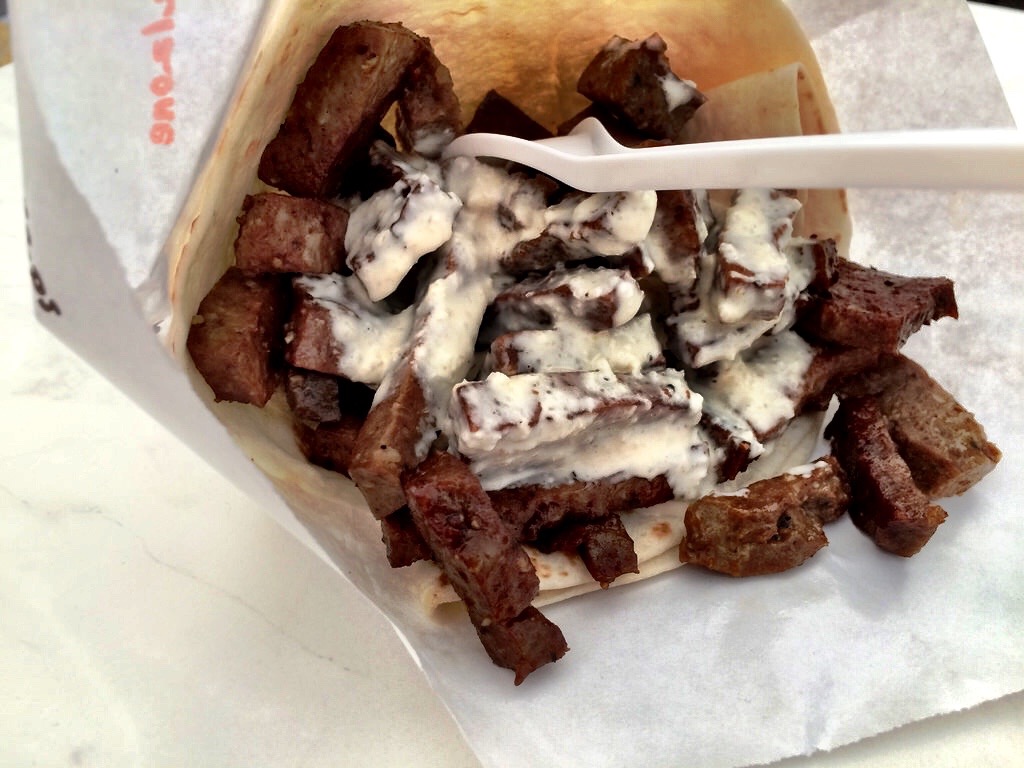
Norway – Reindeer Gyro
Overall, I enjoyed the food in Norway but it wasn’t until I visited Alta in the north of Norway that I found more of the foods one would call traditional. Reindeer in nearly every form imaginable, from gyros to well-prepared steaks, became my go-to dining option. I thought at first it would be too gamey, but unlike elk or venison the reindeer had a certain steak quality to it and I enjoyed it, as long as I didn’t think about Santa Claus at the same time. Norway is famous for its open-faced sandwiches at lunchtime, but in Alta they didn’t just take their normal form – seafood and cured meats – but also reindeer. Their small size make them easy to eat and convenient, but the real star of the show for me were the reindeer gyros. Ok, not really called gyros, but that’s what they reminded me of; a Nordic version of the doner kebab. Smothered in some sort of sauce I didn’t understand, it was a messy but hearty and delicious noontime meal.

Freiburg, Germany – Pastries
I have a fierce sweet tooth, so for me a big part of the foodie travel experience is discovering new sweet treats to enjoy. Luckily, Germany is one of those countries where that is a simple mission to achieve. As far as pastries go, I found many new examples of delicious baked goodness, from rolls with sugar and raisins to small puffs made with chocolate and granulated sugar. German bakeries are amongst the best in the world and even the most common pastry found at a train station cafe far exceeds anything I can find here at home.
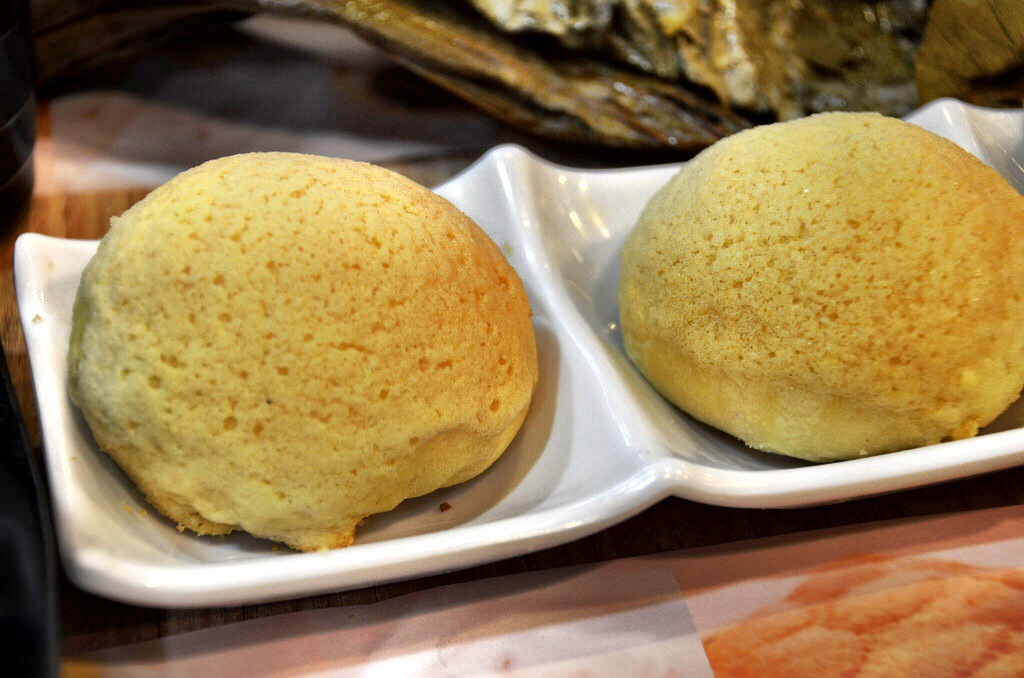
Hong Kong – BBQ Pork Buns
I like dim sum in general, but I love these buns of tasty goodness so much I decided to list them as a stand-alone bite. If Hong Kong had a national dish, it would be the BBQ pork bun. Steamed to porky perfection, the Cha Siu Bao is a simple but delicious meal. The dough is slightly dense, but incredibly soft with a hint of sweetness that only compliments the prize inside – slow-roasted pork tenderloin. You can find this classic meal all around town, but a place that may surprise you is the airport. One of Cathay Pacific’s amazing lounges, The Wing, features The Noodle Bar, which includes freshly made dim sum and my beloved BBQ pork buns. It’s a great final culinary send off from a city full of foodie surprises.
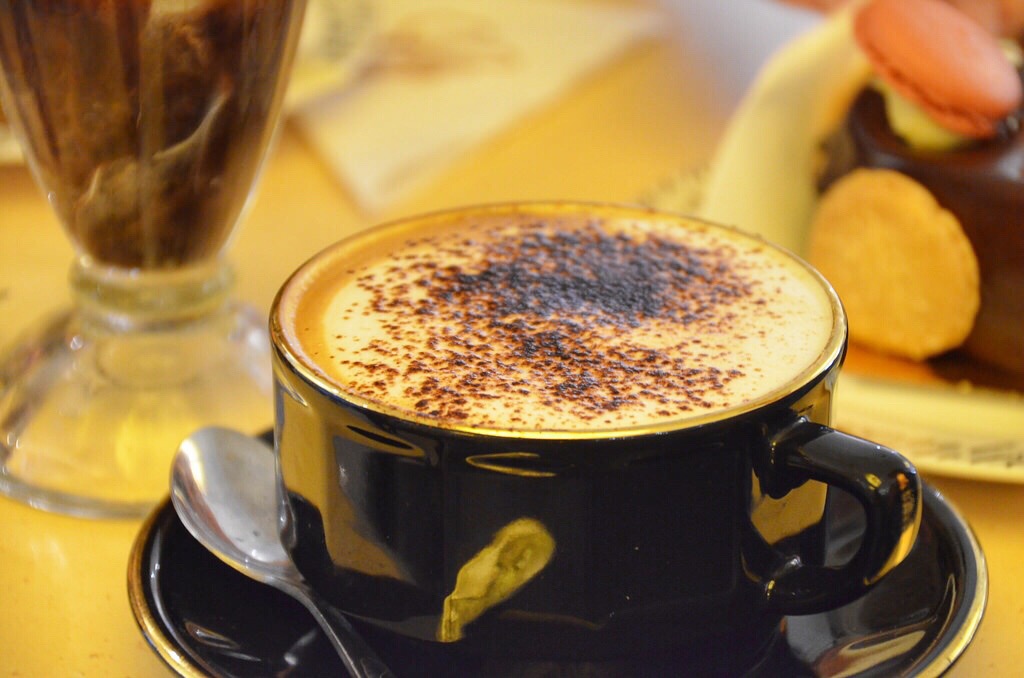
Australia – The Perfect Cup Of Coffee
Certainly not new to me, in fact coffee culture in Australia is one of my favorite aspects of traveling there. A trip I took to Queensland earlier this year though was a little bit different; I had more time and moved at a slightly slower pace, which meant I had more opportunities to immerse myself in the country’s robust coffee culture. Particularly when I spent a week in the Gold Coast, I spent every morning in the neighborhood coffee shop eating breakfast, slowly sipping my long black and catching up on my email. Coffee culture in Australia has evolved over time, but a large influx of European (and particularly Italian) immigrants in the 1950s and 60s greatly sped up this conversion to the coffee-loving country it is today. Instead of the drip coffee we’re used to here in the U.S., coffees in Australia are espresso-based, catapulting a simple cup of joe into an art form. Coffee in Australia is unlike any other country, they’ve developed their own drinks with strange names like Long Black and Flat White and it’s hard to go more than a few feet anywhere in the country without stumbling across a great, locally owned independent coffee shop. There are few things better in the world than spending time at the local café, a national pastime in Australia right up there with rugby, Aussie rules football and making fun of politicians.

Peru – Empanadas
Empanadas are not unique to Peru – far from it. In fact versions of serving filling inside bread of some sort exist all over the world and for good reason; they’re easy, cheap and convenient. Brought to the New World by the Spanish and Portuguese, these tasty snacks can be found in nearly every country on the continent. That being said, the version I found in the small (but touristy) town of Pisac in Peru may be the best ones I’ve ever sampled. Located in the Sacred Valley about an hour from the city of Cusco, hundreds of tourists crowd the main plaza of Pisac every day to shop at its market and to try the foods that make this small Andrean town so well known. For the uninitiated, the empanadas I tried in Pisac were small, moon shaped pouches of dough available with a wide variety of fillings including beef, chicken, cheese and others. So what made the ones in Pisac so much better than all of the others I’ve tried? The ovens. The traditional way to cook these tasty bits of doughy goodness is in dome shaped clay ovens and in Pisac, the old colonial ones are still intact. Stop by Santa Lucia Horno Colonial for a quick snack on the go, one of the best places in town to enjoy these traditional foods, and believe me you won’t regret the experience.

North Carolina – Great American BBQ
As a proud Southerner, I can say without hesitation that great BBQ is probably the meal I’d ask for on my deathbed. It’s delicious, but it’s also comforting. BBQ has a soul that not many other foods possess; it exists not just in textures and flavors but also in a range of emotions. BBQ differs widely around the country though, from sticky Kansas-style to Virginia’s ketchup based sauces and of course the vinegar that makes North Carolina so famous. I always considered myself a Virginia BBQ guy, until a trip to North Carolina introduced me to some of the best pulled pork I’ve ever enjoyed. In North Carolina, BBQ involves a whole hog that is slow-cooked to perfection over a massive pit for a period of many hours, infusing that great smoky taste into the meat itself. Where I’m from in Virginia, we would add a thick, ketchup-based sauce to the pork or chicken but that’s not how it’s done in Eastern North Carolina. No, instead there it’s all about preserving the taste of the meat itself, adding only vinegar, maybe some hot sauce, salt and pepper and that’s it. The best example I found during my romp through North Carolina was at the Skylight Inn, in Ayden, North Carolina. The meals are served with the choice of sandwich or full meat platter along with coleslaw and cornbread. But that’s it. No fries, beans, hushpuppies or anything else that I’m used to when eating a great BBQ dinner. But after my first taste I realized that nothing else was needed – the meat was that good. Slightly charred bits of meat mixed in with the succulent and woody pork all combine to create what was honestly one of the best BBQ experiences of my life.
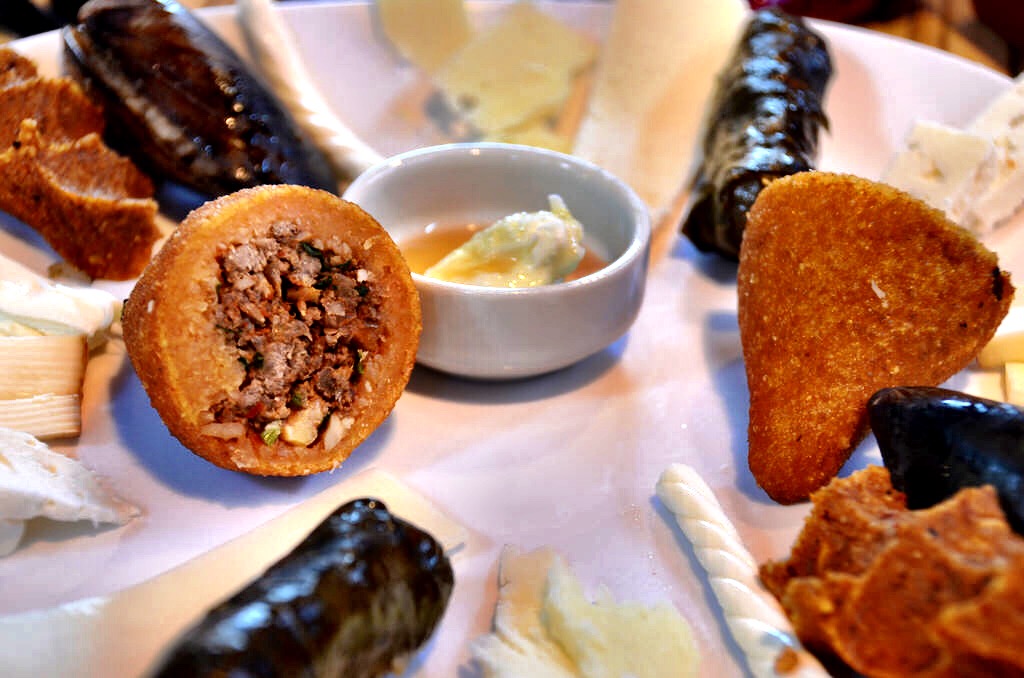
Istanbul, Turkey – Food Tour
Istanbul is one of the most intriguing and dynamic cities in the world. Straddling two continents and enjoying a long tradition of welcoming merchants from around the world, the result is a culture that is varied and composed of elements that might surprise you. This is naturally best seen through its food culture, something I knew very little about before taking a Walks of Turkey Istanbul Food Tour. I met my guide on the European side of the side where we hopped on board a ferry to cross the Bosporus to start our tour in the eclectic Kadıköy neighborhood on the Asian side of the city.
The tour was fun and informative and while I enjoyed almost everything I sampled, my favorite bite was during my introduction to Turkish mezze. Mezza, small plates, is a popular way to eat in Istanbul, so I decided to have my own little mezza experience at a small deli in the Kadıköy neighborhood. Different kinds of kofte, made with minced meat and spices, homemade cheeses with honey and a few things I couldn’t identify, but which were delicious. Not for the first time that day I wondered how the Turks stay so fit when their food is so very good.

German Christmas Markets – Reibekuchen
This is a great example of a new food experience discovered while touring Germany’s Christmas markets. I didn’t see these delicious treats at all last year along the Danube, but they were an important culinary fixture this year as I explored the villages and cities along the Rhine with Viking River Cruises. They’re also very simple, these potato pancakes are deep fried potato fritters served with a variety of toppings, from applesauce to cheese. Usually served in bunches of three, the portions are more than enough for a complete meal. Reibekuchen are also intensely popular, at least based on the markets I visited and for many folks seem to be one of the comfort food staples of the Christmas market experience.
What were your best travel food experiences of 2015?
The post 10 Best Travel Food Experiences of 2015 appeared first on LandLopers.

I’m a big proponent of a well done walking tour. They usually only last a few hours and if you choose the right one, what you take away from the experience can transform your impression of an entire city. Lately I’ve particularly enjoyed taking food tours, learning about new cultures and their traditions in the best way possible – through what they eat. Food tells us more about new destinations than anything else and not only are these walks informative, they’re a lot of fun too. I had a lot of options when I visited Istanbul on my Viking Ocean cruise, but when I learned that one of my favorite walking tour companies had recently opened an office in Turkey, I knew I had to give them a try. That’s how I found myself joining a Walks of Turkey Istanbul Food Tour.
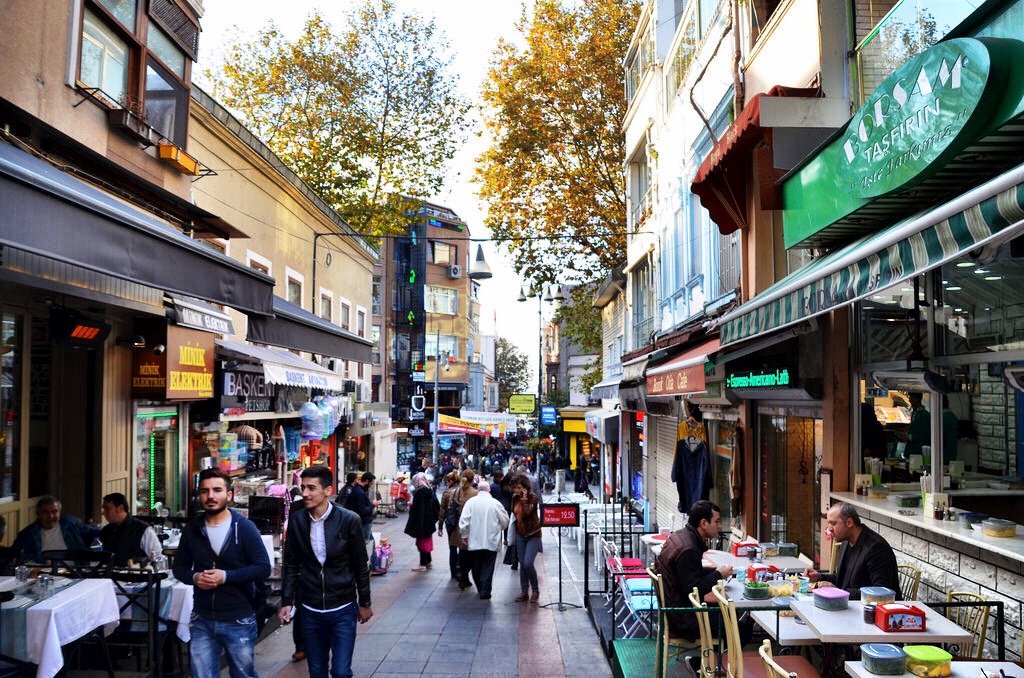
Istanbul is one of the most intriguing and dynamic cities in the world. Straddling two continents and enjoying a long tradition of welcoming merchants from around the world, the result is a culture that is varied and composed of elements that might surprise you. This is naturally best seen through its food culture, something I knew very little about before meeting my guide on the European side of the city to take a short and scenic ferry ride over to the neighborhood of Kadıköy on the Asian side of the Bosporus.
It was my first time visiting that side of the city, even though it was my second visit to this, the largest city in Europe. Since most of the top tourist sites are across the river, the same holds true for most visitors to the city, a fact that made me even more excited to visit Kadıköy. What I found was a bustling neighborhood completely unlike what I had imagined it to be. Along the waterfront were a few Western staples, like Cold Stone Creamery, but once we walked past those shops and into the market stalls of the neighborhood itself, everything changed.
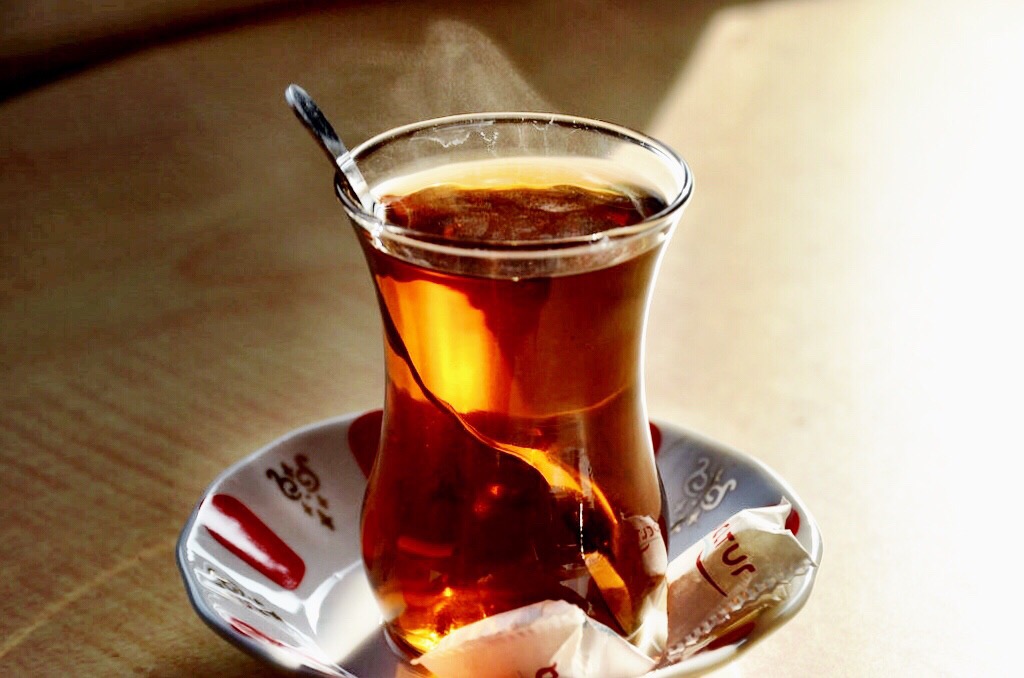
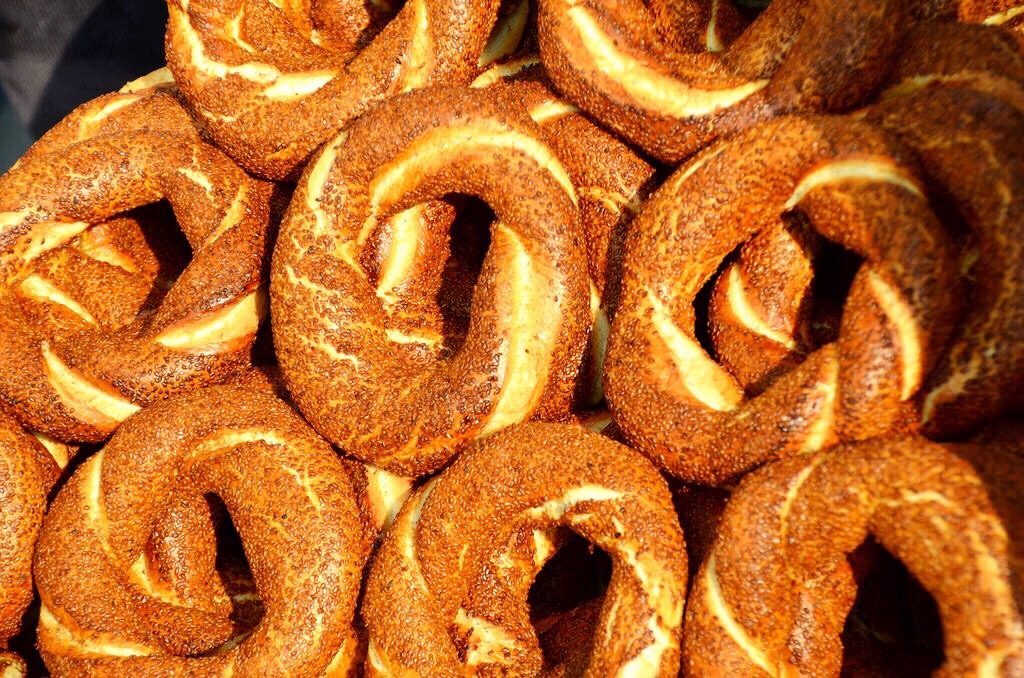
One reason why I enjoy premium guided tour companies like Walks of Turkey so much is that they do more than just regurgitate boring facts. No, instead they try to bring participants into the local community, which is why my tour started in the same way as it does for many people in the city, with a cup of tea and a freshly made simit. Turkey may be best known for its thick coffee, but on a daily basis Turks drink much more tea than anything else. Everywhere I went I found people either buying or selling these small glasses of black tea, it’s so common an aspect of daily life that I think people must lose track of how much they consume every day. Simit is a great go-to snack or breakfast item, simply a sesame-encrusted ring of dough, you can enjoy it plain or with some cheese or butter for a little more flavor. For me, this classic Ottoman combo was the best way to start my foray into Turkish cuisine.
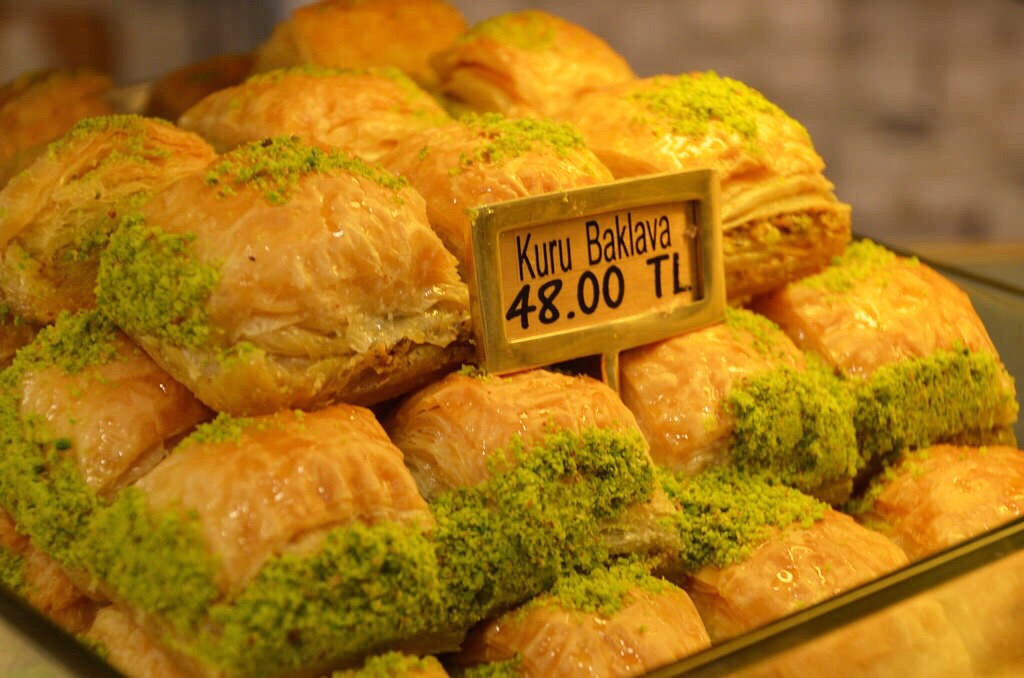
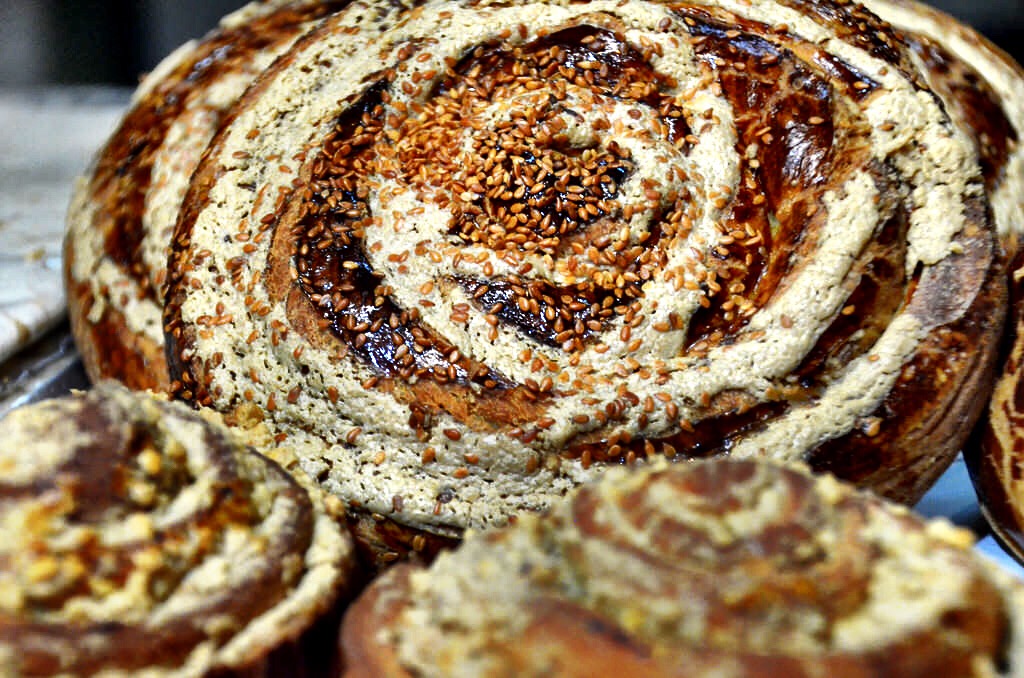
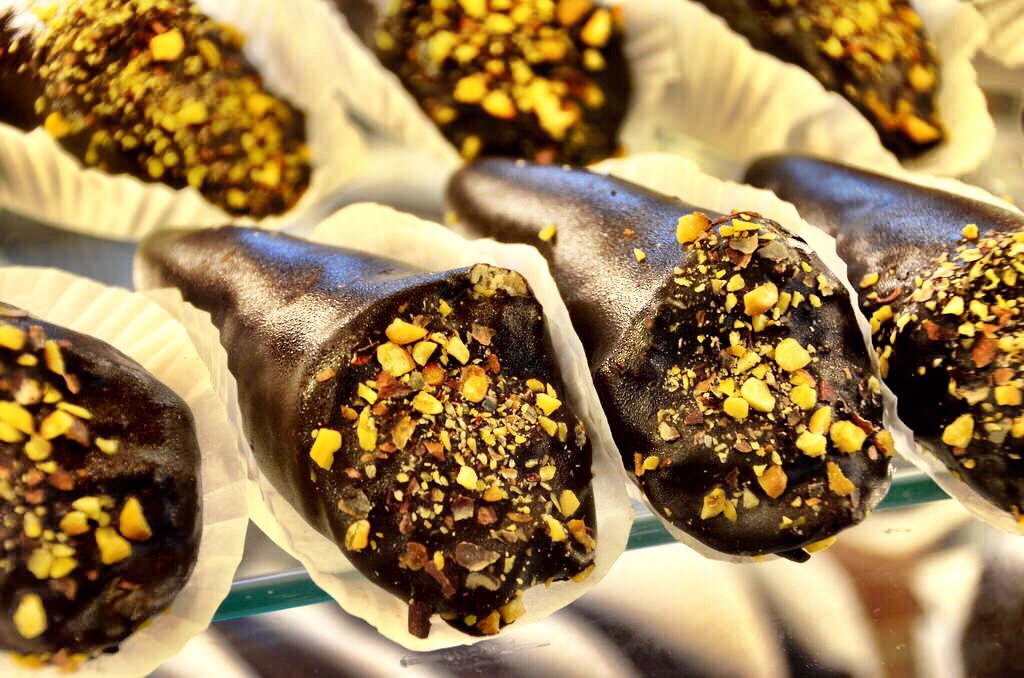
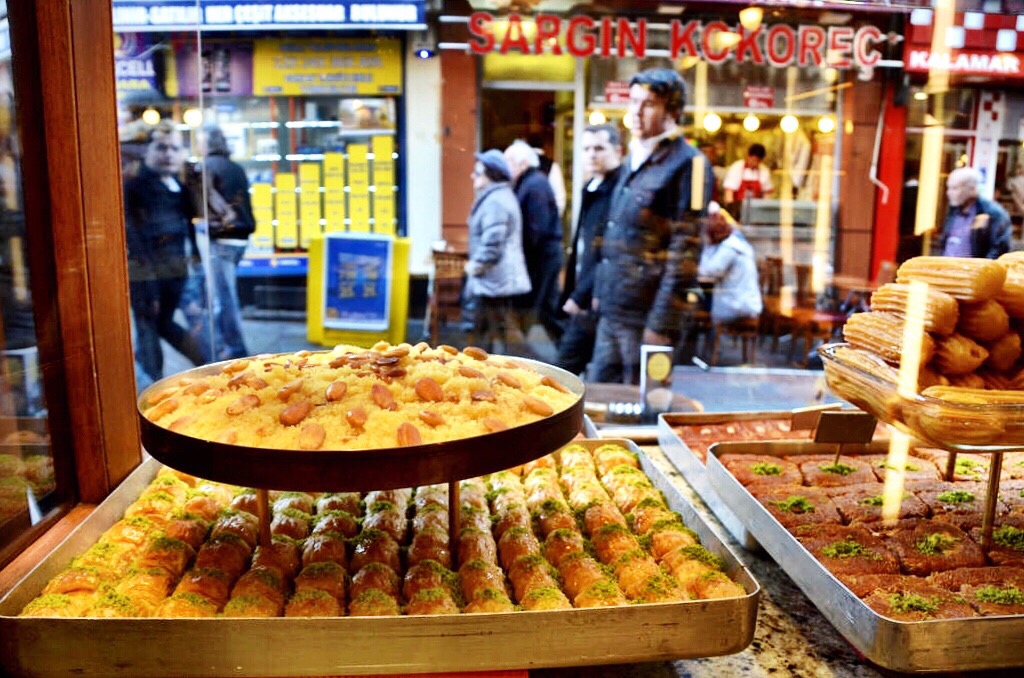
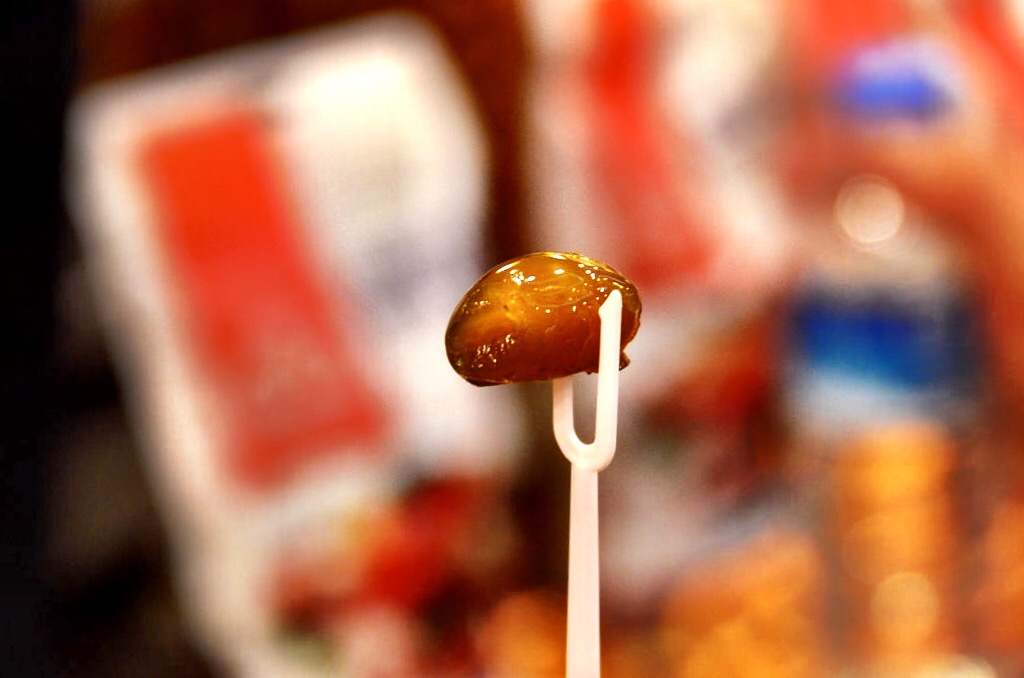
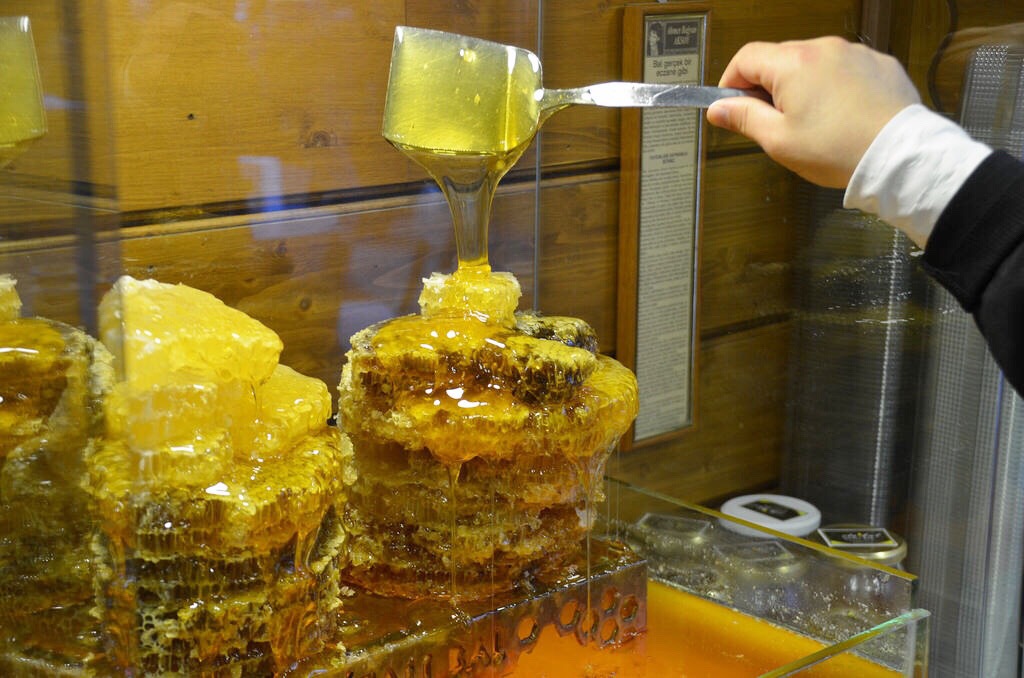
My guide said that many people in Istanbul feel stressed out throughout the day, thanks to work or family or both. Meal times are their opportunities to slow down, relax, laugh and of course enjoy a lot of great food. Maybe that’s why mezze is so popular; these small plates allow folks the chance to try many different things and to engage more with everyone around them. Walking around the market I tried several of these small plates, as well as other snacks like freshly made yogurt with honey, a sweet pastry roll made with sesame paste instead of cinnamon, and any number of other delicious items. I also discovered a lot of things that surprised me. I learned that Turks are a lot like me in their love of breads, pastries and sweets. Drawing upon their global roots, I was surprised to find as many sweet options as I did that day, especially the somewhat strange tendency to candy anything they can. I’m used to some of these preserved and sweetened fruits, like apricots and figs, but in Istanbul you can find anything candied, including olives and even pumpkins.
Sitting in cafes with my guide, watching people walk by and enjoying the same snacks as everyone else, that was probably the greatest aspect of the tour. I felt like I was a part of the neighborhood, if only for a couple of hours, noshing on the same locally produced delicacies as everyone else around me. Throughout the tour my guide shared with me the history of the city and the reasons why the foods we enjoyed that day were so important in the everyday life of the city. I’m not going to share everything here or even tell you all that we ate, I don’t want to ruin the tour for everyone, but within just a few hours I learned more about Istanbul than I ever could have through a more traditional tour of the city’s famous sites.
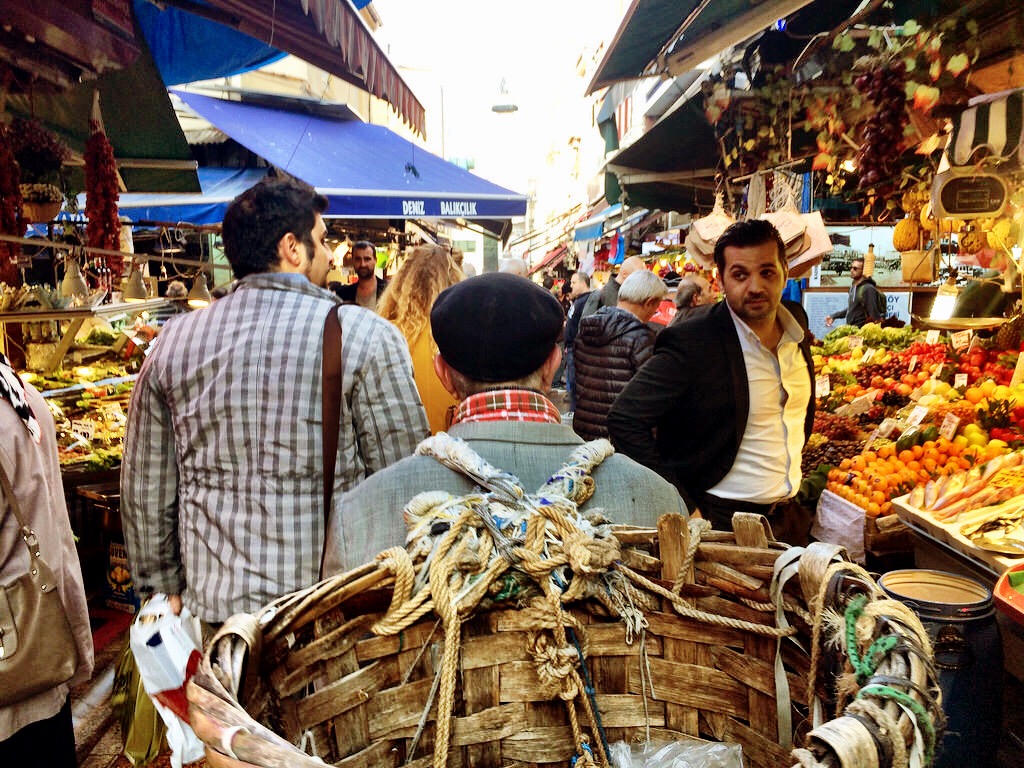
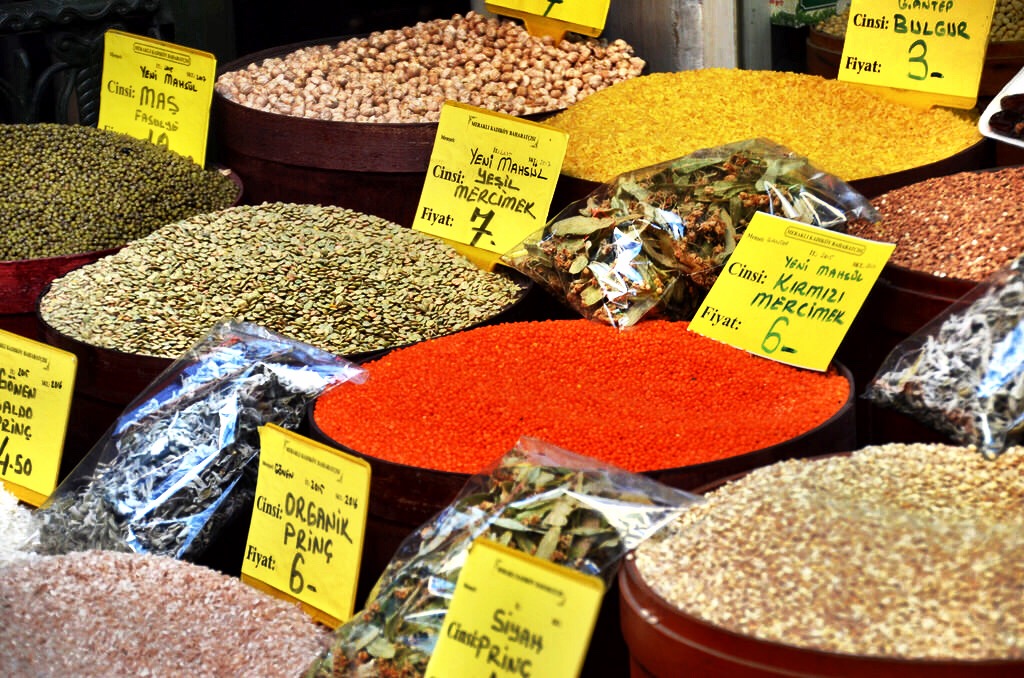
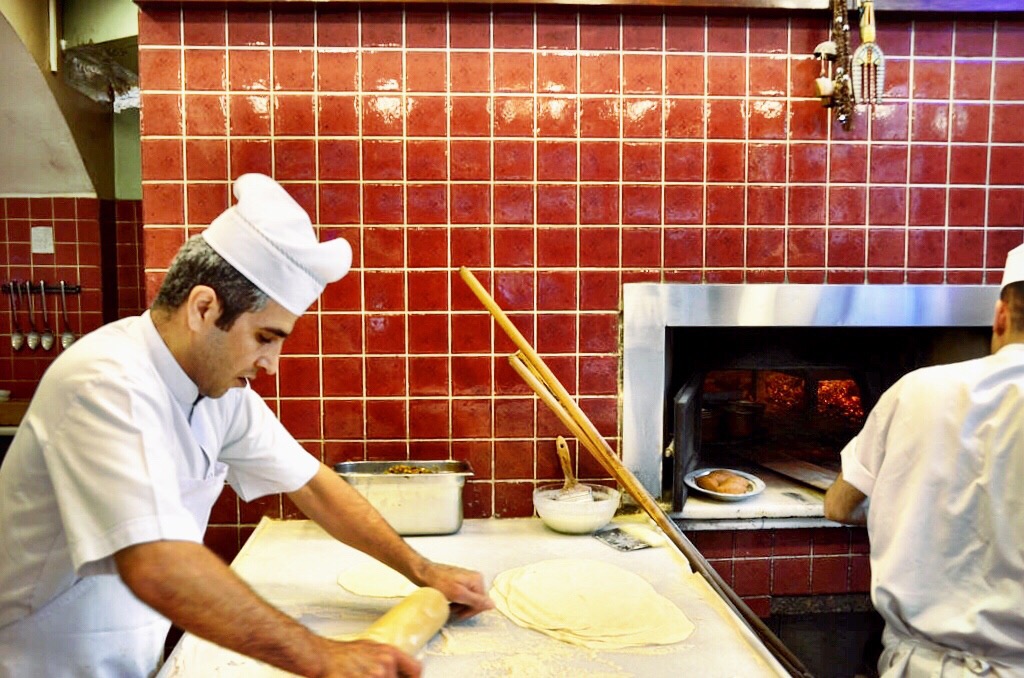

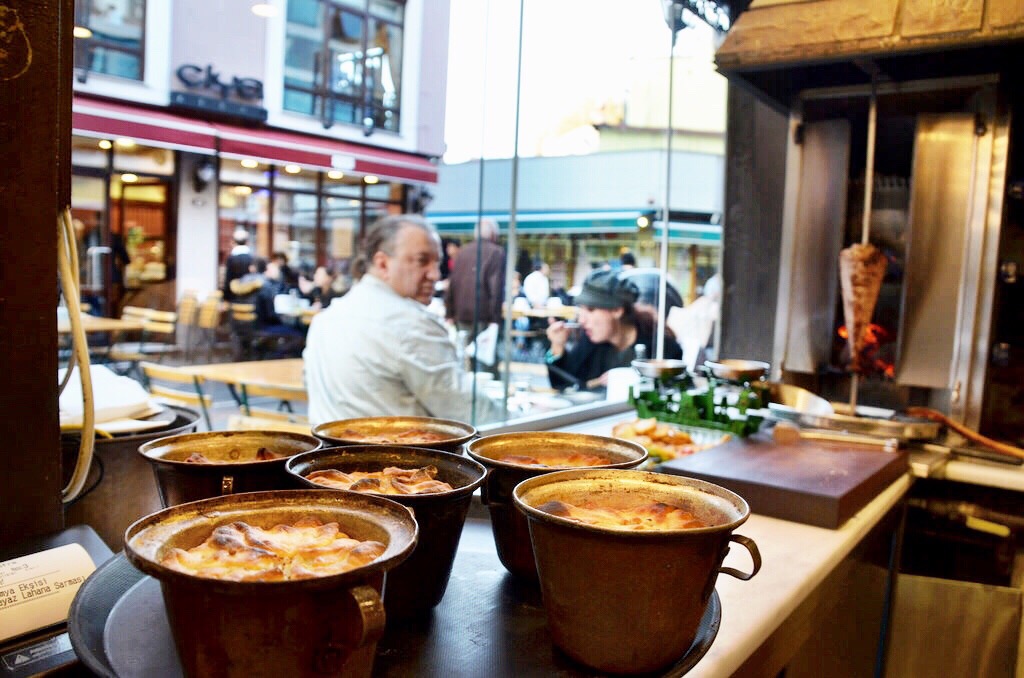

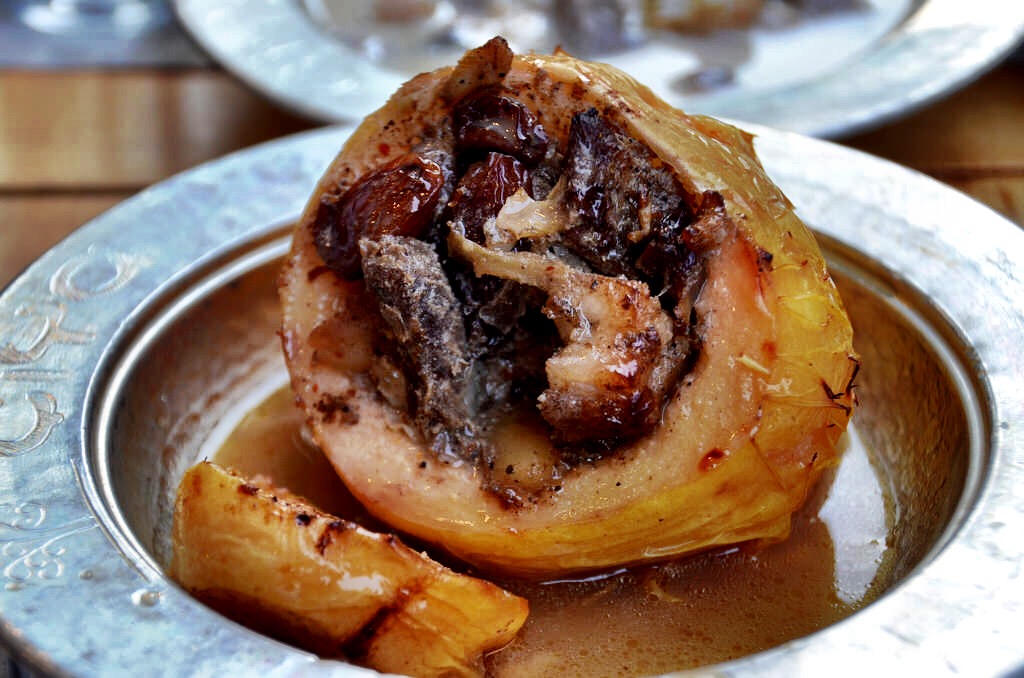
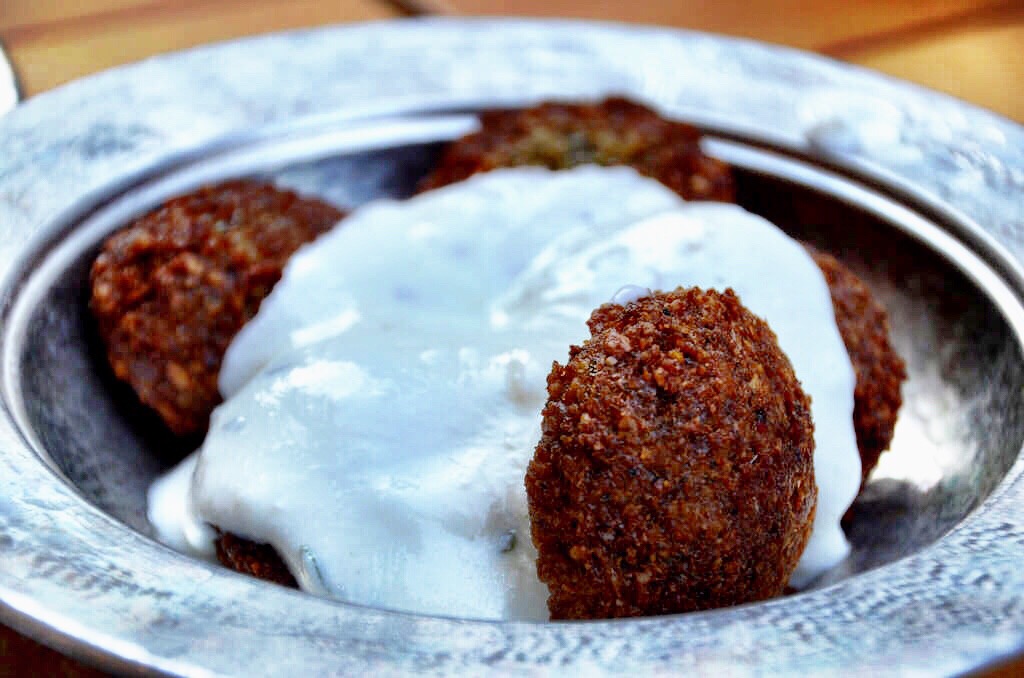
Did I enjoy everything I tried? No, not even close – I’m looking at you pickled lettuce juice – but I enjoyed nearly everything and even more importantly, I was surprised by many of the dishes I ate. I consider myself to be somewhat worldly, but most of the foods I was introduced to not only had I never eaten before, I’d never even heard of them. Through the course of this culinary education of course I learned about the country, its traditions, history and everyday life; all of which are worth more to me than even the very best kofte offered in that market.
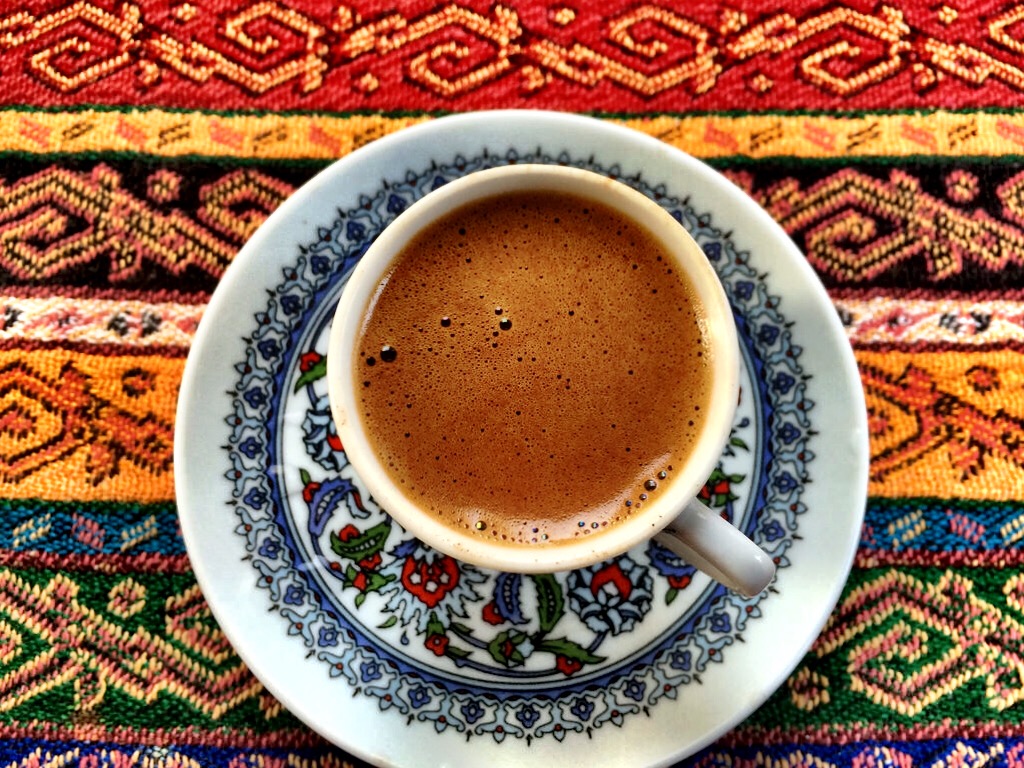
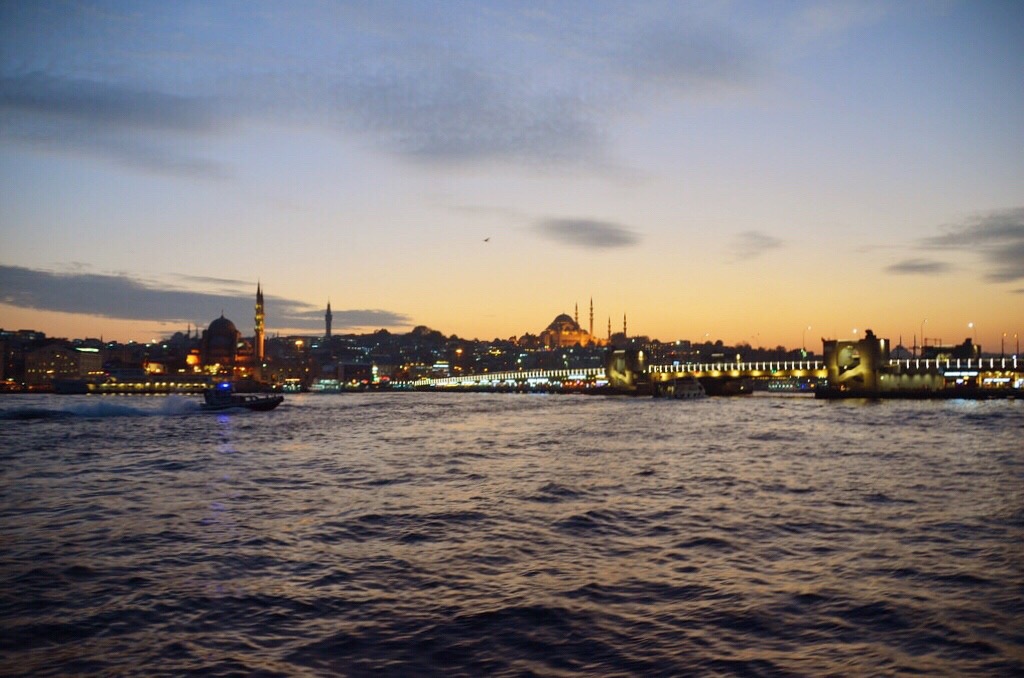
The sun was beginning to set as our tour ended over a cup of thick and traditionally prepared Turkish coffee at one of the many cafes found around the Kadıköy neighborhood. On the ferry ride back to the European side I had time to reflect on my decision to spend my day not touring a mosque or the city’s famous underground areas. My time in town was very limited, but I went on that Walks of Turkey Istanbul Food Tour for one reason – to learn as much about the heart and soul of the city as I could and I succeeded. Food memories are what we remember most from any travel experience. Taste and smell can bring back memories faster than a word or photo ever will. That’s why I think food tours aren’t just nice, but they’re actually important to do. It’s important to form these permanent memories of a new destination and in the process not just walk away with a full tummy, but with a much deeper and personal understanding of the city than we would get through any other experience.
Where was your favorite food tour?
Visit the Walks of Turkey site to learn more about the Istanbul Food Tour.
The post Istanbul Food Tour – Eating With Walks of Turkey appeared first on LandLopers.

I’m not a big fan of travel bucket lists, but that doesn’t mean there aren’t places I don’t want to visit before all others. I think we all have those places in mind; dream destinations that may or may not ever become a reality. I know that everyone has a best of list for 2015, and so rather than just add to the fodder of not all that useful travel information I thought I’d share some places I would really like to see in 2015. Some of these are realistic and some are not, some will happen and others will not, but they all combine to create my favorite part of travel – the anticipation. Where would we be if we didn’t stare at a calendar and dream of a tropical beach or pine after visiting some cultural masterpiece in Europe? This list is a combination of places I have never been to and others that I’d really like to revisit and explore some more. If anything, this list provides a little more insight into my admittedly at times strange personality, so I hope you enjoy this glimpse into my ultimate travel goals. I’d love to hear yours too, so please be sure to list them in the comments section below.
These are in NO particular order, really I mean that. Except for number 1 – that’s always my top pick.
1. South Pacific/French Polynesia
My first real travel obsession and one that I STILL haven’t been able to check off the list yet, despite its prominence on similar lists year after year. When I was a kid I read Michener’s epic tome Hawaii, which set off a furious bout of wanderlust not just for Hawaii, but the entire South Pacific. Even though I am not normally a beach kind of guy, there is just something about the perfect waters of French Polynesia that gets my heart beating a little bit faster. Will 2015 be the year I finally make it to the beautiful islands of the South Pacific? Who knows, but I’m hopeful.
2. China
My only experience with China is visiting Hong Kong – I’ve never been to the mainland and I am frankly intrigued. It’s obviously a massive country and requires many visits to see properly, but I would like to at least visit to start the process of education and to see for myself Beijing, pandas and of course that large wall for which they are so famous. I have to be honest though, the food and language barrier both intimidate me.
3. Brazil
I’ve been to South America a few times, but only briefly and it’s a continent that I don’t feel like I know at all. But that doesn’t mean it hasn’t interested me, it has and near the top of that interest list is Brazil. From the massive cities to rainforests and jungles and of course beautiful coastlines, Brazil seems to offer visitors a little bit of everything. But crime, high prices and difficulties in intra-country travel have put off many would-be travelers. I’m curious to visit and see for myself whether or not these are real concerns, or fake media-hyped problems.

4. Anywhere to see the Northern Lights
Almost, I almost got to see the beautiful Aurora Borealis, but cloudy weather in Iceland foiled my efforts. Canada, Alaska, Iceland, Norway – these are all great locations from which to catch a glimpse of the eerie and colorful lights that seem to be en vogue at the moment. I don’t want to see them just because they’re currently popular, I want to witness first hand what honestly must be one of the most beautiful sights on the planet.
5. The FSRs
The Former Soviet Republics, these are a diverse group of countries that include everything from modern urban areas to plains that look like something out of a Game of Thrones book. No matter what though it’s hard to deny how intriguing they are. They can be difficult to visit though, both in terms of transportation and language barriers, which is probably why I haven’t been yet, but I hope I can see at least one of them this year.
6. Tasmania
Australia is one of those countries I could visit a thousand times and never get tired of the experience. It’s a special place but Tasmania in particular currently has piqued my interest. Slightly remote, amazingly beautiful and somewhat different from the mainland, Tasmania is an intriguing place. Of all of these destinations, I really do hope that I can make this one happen in 2015.

7. More of Africa
Before my first visit, everyone always told me that Africa latches on to your soul and never lets go but I didn’t believe them until I experienced it for myself. There is something indefinable about this massive continent that just begs for travelers to return again and again and try to suss out what makes it so very special. I’m always happy to return to South Africa, one of my favorite countries, but I’d also love to see more of Africa, from Kenya to Namibia and who knows where else.
8. The Arctic
I love expedition style trips; my experience in Antarctica was one of the best I’ve ever had. It’s with this in mind that I’d love to plan a trip to the other side of the planet and see some of the Arctic regions for myself. Leaving from Svalbard I’d really enjoy seeing polar bears in the wild and the icy waters on top of the planet.
9. Myanmar
Closed off to foreigners for years, Myanmar suddenly finds itself as one of the hottest new travel destinations in the world. It’s not its trendiness that appeals to me though; it’s the photos I’ve seen my friends take. The people, the temples and the countryside all look like something out of a movie – it’s just that beautiful. While traveling there definitely comes with some headaches, I’d be happy to take those on to experience the country before the rest of the world changes it too much.

10. Thailand and Bhutan
Thailand is one of my favorite destinations and it’s been a few years since my last visit so obviously it’s time for a return. This time though I’d like to also include a trip to not-so-far-away Bhutan. One of the most mysterious countries in the world I think, everyone I know who has visited has left the country changed in some way or the other. It’s intrigued me for a long time and while epic hikes don’t sound all that great, this nation in the clouds is one I’d definitely like to experience for myself.
11. Alaska
I’ve been to almost every state in the Union, but the 49th state has eluded me. I’m not exactly sure why either, but I just haven’t managed a visit to this massive and beautiful place. Chatting with family members though, it looks like a cruise up there may be in the works and so finally I’ll be able to experience the glaciers and quirky communities that make this last frontier of America so very appealing.

12. Scandinavia
There’s just something about Scandinavia that appeals to me on a very base level. I’m not sure if it’s the people, the sense of style or the societal organization, but whatever it is I just feel like I belong there. Sadly though I’ve only skimmed the surface and have lots more to see and do. Norway is near the top of my list, but so is Stockholm in Sweden. I’ve been to West Sweden before but never the capital city, and it’s a place that I think will be one of my favorites once I finally do manage to visit.
13. American West by car
Although I’ve technically visited almost every state, I don’t feel like I’ve really SEEN my own country. Its impressive size means that lifetimes could be spent exploring America and still things would be missed. What I haven’t done yet and would love to try this year is an epic road trip through some of the Western states, including stops at a few of our amazing National Parks. More than a century ago the US began the conservation movement and our National Park system was the first in the world to recognize the inherent societal value these pristine wildlands possess. So they’re important. Add in quirky roadside stops and I really think this adventure will be a personal favorite.

14. New Zealand
I visited New Zealand several years ago but it was a brief visit, just a week, and an intensely busy one. I would like to once again see the Land of the Long White Cloud and hopefully bring my partner along with me this time. There’s something just so very special about New Zealand that makes it an extraordinary place to visit. I’m not sure if it’s the natural beauty or the quirky people, but it makes an impression and I have yet to meet someone who didn’t leave having fallen in love.
15. India (Maybe)
India is one of those places that evokes a visceral reaction from people who have visited – they either love it or hate it, there is no middle ground. I honestly don’t know if I would like it or not and up until now I haven’t felt prepared enough to visit. But I think I’m ready mentally to see what the subcontinent is really like. I would want to travel there though in very specific ways and see very specific things and it’s owing to this level of particularity that I’m not sure it’ll happen and frankly, I’m not completely convinced that I want it to. But we’ll see!
What are some dream destinations you’d love to visit in 2015?
The post 15 Places I Want To Travel To In 2015 appeared first on LandLopers.
Some cities you expect to be romantic; Paris has made billions of dollars on that premise alone. Other cities surprise you though with their ability to charm and to help create those special romantic moments between you and your loved one. Here are some of my favorite cities that may not sound romantic, but really are.
1. Istanbul – I admit it, I was dubious when I first visited Istanbul. In fact, I doubt we would have gone had it not been a stop on a Mediterranean cruise we took a few years ago. Thank God for that cruise though, otherwise we would have missed out on one of the great, and most romantic, cities of the world. It’s cliche, but it’s true, that Istanbul straddles two cultures, the East and the West. It’s position on the Bosphorus has made it a cultural crossroads attracting traders and wanderers from around the world for millennia. That globalism has made Istanbul an exciting and visually stunning city. One of my favorite romantic activities is to stroll around the Sultanahmet neighborhood, window shop a little before deciding on a cafe to spend the evening enjoying the sights, sounds and smells of this ancient town.
2. Prague – After decades of Communist rule one may incorrectly assume that Prague is littered with drab buildings, dour people and general unpleasantness. The last thing that came to mind before I visited was a lovely city with lots of opportunities for romantic moments, but that’s what I found. Since the Velvet Revolution in 1989, Prague has blossomed into not just a nice place to visit, but a hugely popular tourist destination. Sure, there are remnants of its Communist past and yes, I saw a few drab buildings, but the medieval art and architecture more than make up for the design errors of the 1970s. While you won’t be alone, be sure to take a stroll along the Vltava river with Prague Castle looming nearby. I can’t think of a more romantic moment anywhere else in the world.
3. St. Michaels – If you’re a local than this won’t surprise you, but strangers to the DC metro area may not be familiar with the sleepy towns nestled along the Chesapeake Bay. One of the oldest areas of the state, the Eastern Shore has become a popular area to spend a quick weekend, or a longer retreat. I don’t like the term, but the only one that fits the many, small villages in this part of the state is cute. There, I said it, they’re cute – damn cute. One of my favorite towns is St. Michaels, also home to the critically acclaimed hotel the Inn at Perry Cabin. The perfect romantic weekend here starts with one of the Inn’s generously appointed rooms overlooking the water, followed by aimless wandering past the quirky shops lining the main street. Spas are available for those who want to relax and be pampered, and there are plenty of things to do outdoors for the more active traveler. No matter what you do during the day, in the evening head to restaurant 208 Talbot for a great meal prepared in what I call upscale American southern contemporary.
4. Amman – The fact that 1) I knew nothing about Amman before visiting and 2) that I thought it’d be anything but romantic is a conceit of living in the U.S. Our media outlets, all of them, traditionally have not done a great job portraying the Middle East except in terms of war and aggression. At first Amman looks like a lot of other cities in the Middle East. It’s large, somewhat sprawling, and the buildings mostly blend in a blur of brown stone. I think it’s the people that transform this city, their warmth and hospitality make it hard not to love Amman almost immediately. My favorite moment is atop the Citadel, the mountain in the middle of the city and the site of ruins from civilizations long gone. Standing there, the breeze gently blowing, smells of vendors wafting up and the call to prayer rebounding around the hills simultaneously; it may seem unlikely, but that moment is one of the most amazing and romantic you could ever have.

5. Franz Josef – More a village than a city, and a tourist one at that, Franz Josef, at the foot of its eponymous glacier, is the classic definition of mountain romance. The town revolves around the glacier and tourists to the massive Mount Cook, but that doesn’t mean it’s not a fun place to visit. For the perfect romantic evening, start off with a stroll through the tiny town as the sun sets behind the glacier capped mountains. Wander over to the Glacier Hot Pools for a dip in a private, glacier spa and finish the evening with an intimate dinner at one of the several restaurants in town. No matter what you decide to do, it’s hard not to be in awe of the natural surroundings and to feel more connected with your loved one.
These are some cities around the world that surprised me with their ability to inspire romance. What are some of yours?
The post Five Surprisingly Romantic Cities appeared first on LandLopers.
